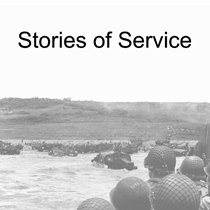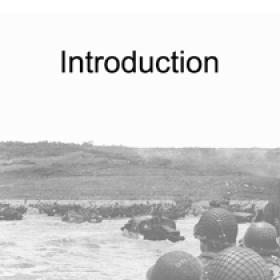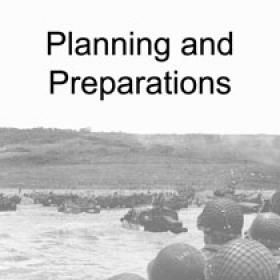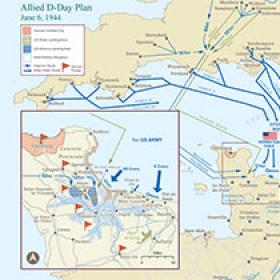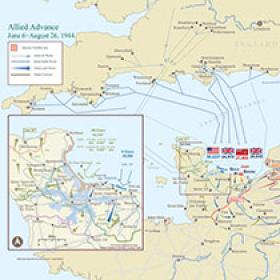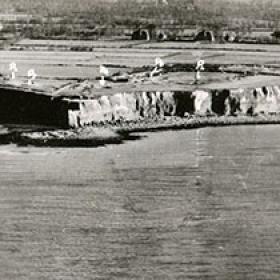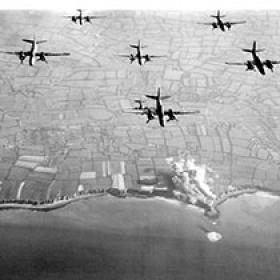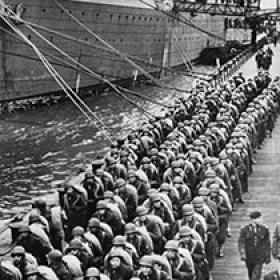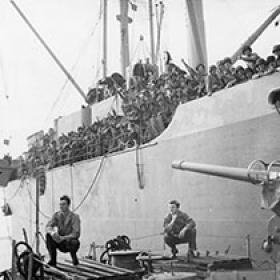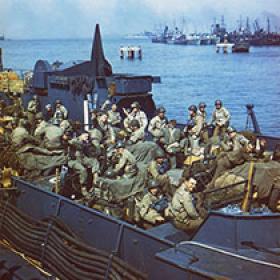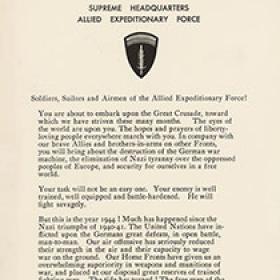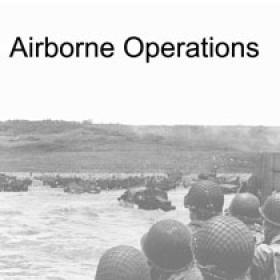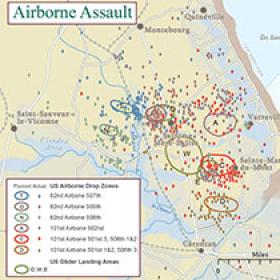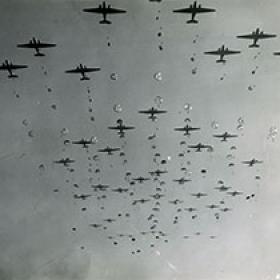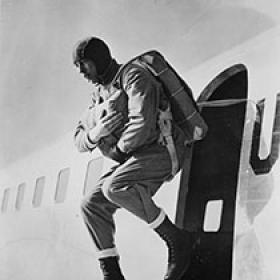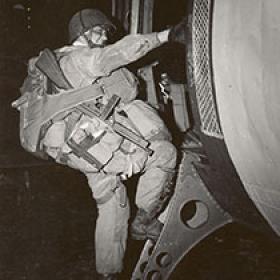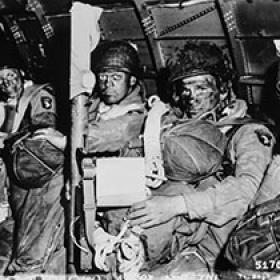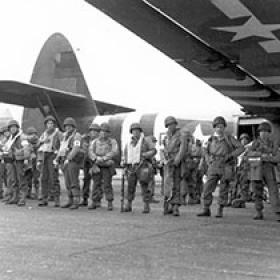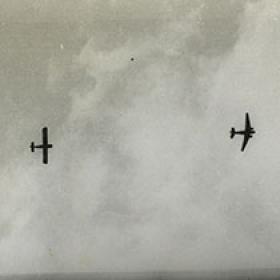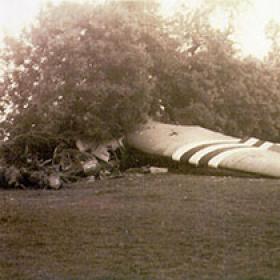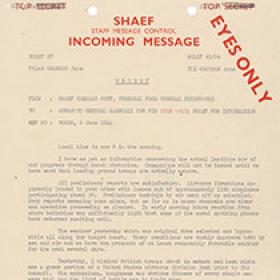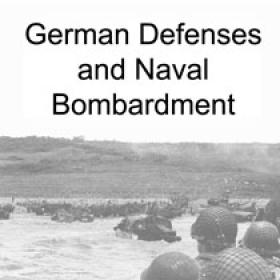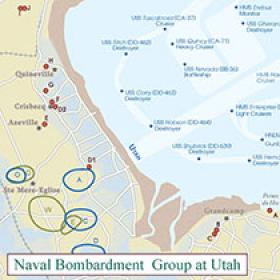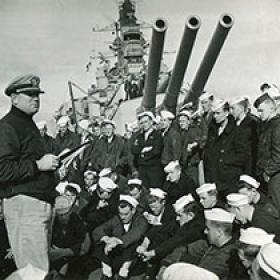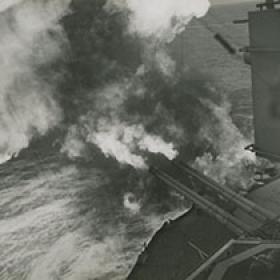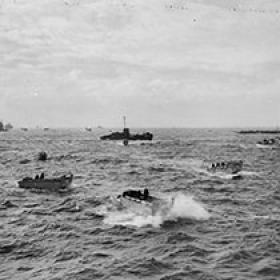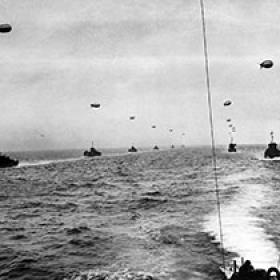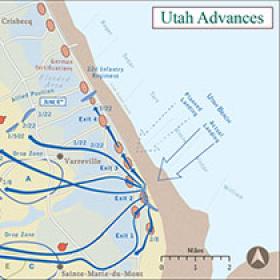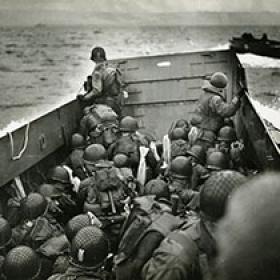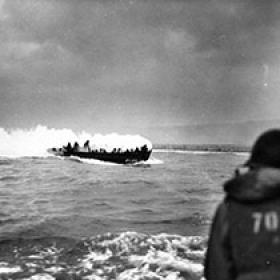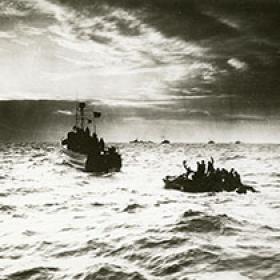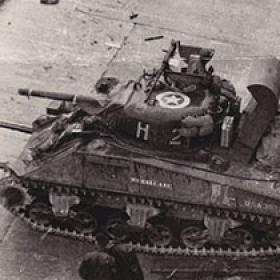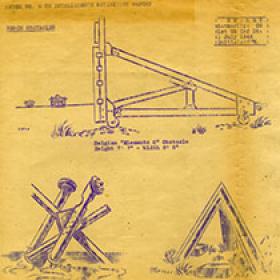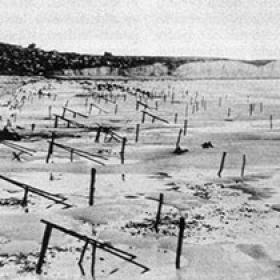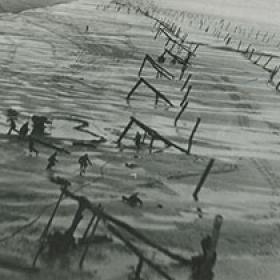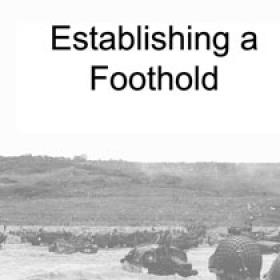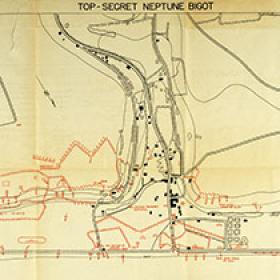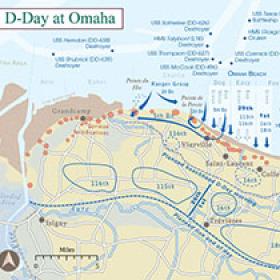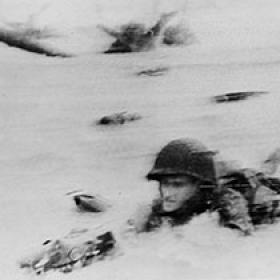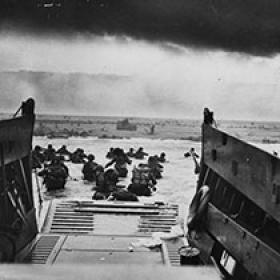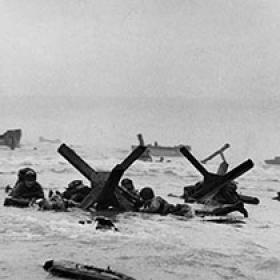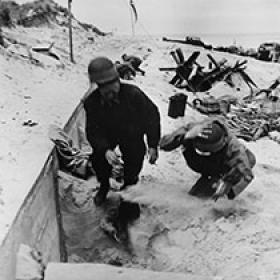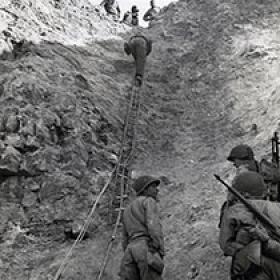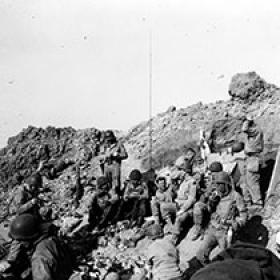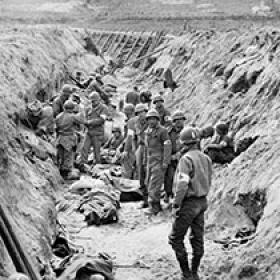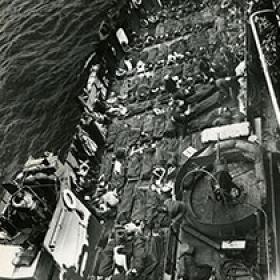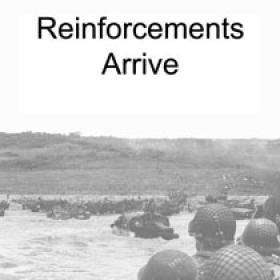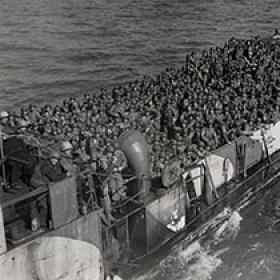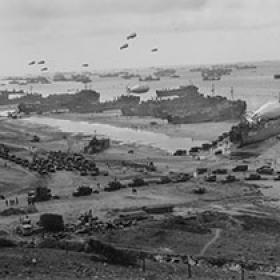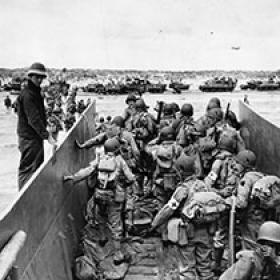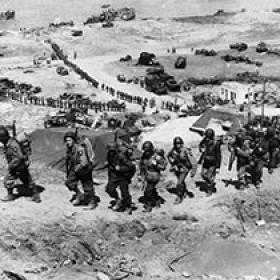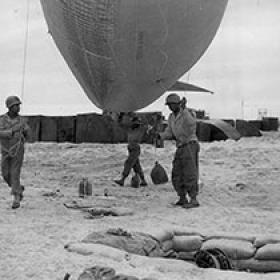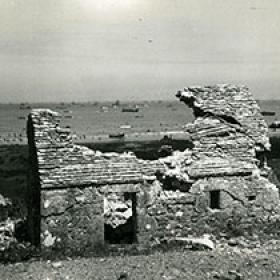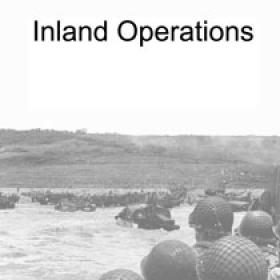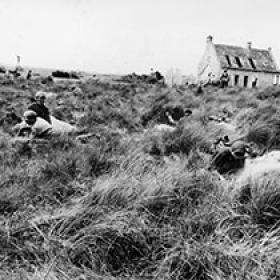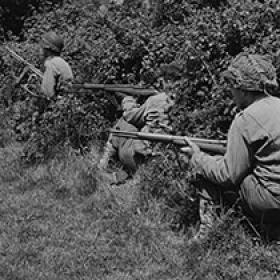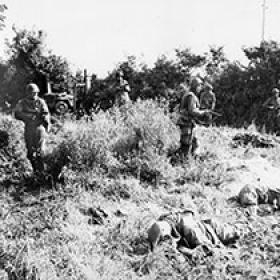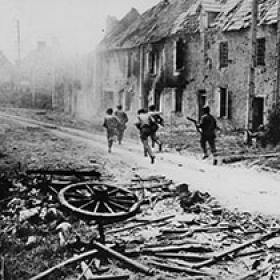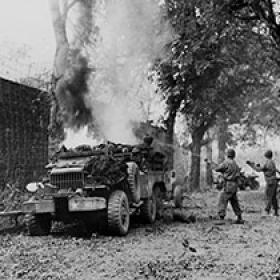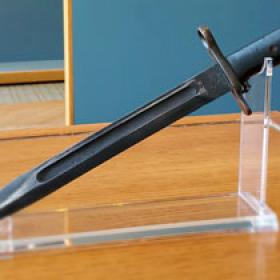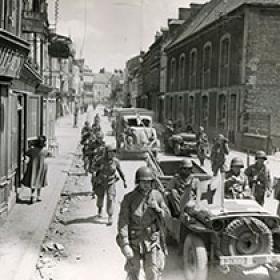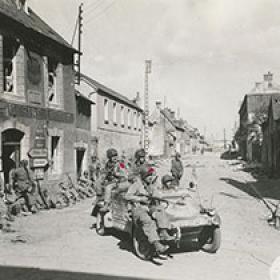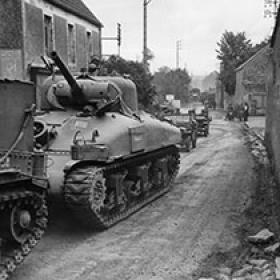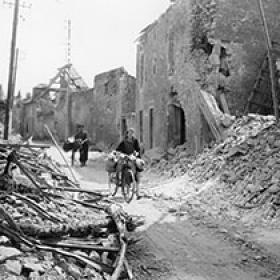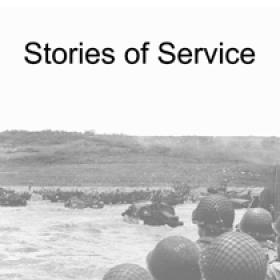D-Day +75
Commemorating the 75th anniversary of D-Day, D-Day +75 goes beyond the story of June 6th, 1944, and helps to understand the planning and logistics required for a successful push towards Germany.
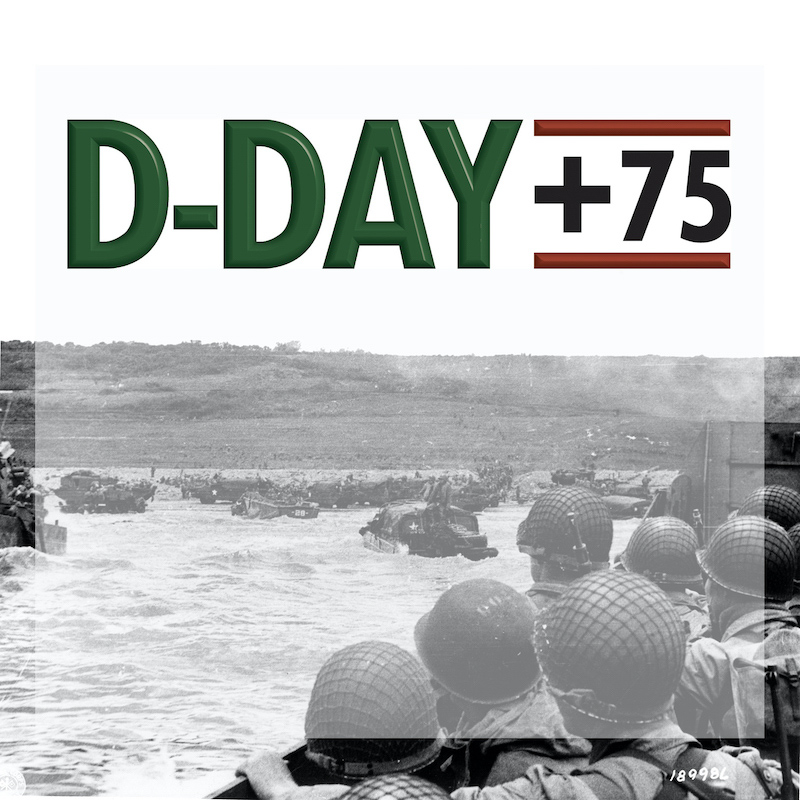
D-Day +75
Learn more about the D-Day exhibit "D-Day +75" at the Pritzker Military Museum & Library.
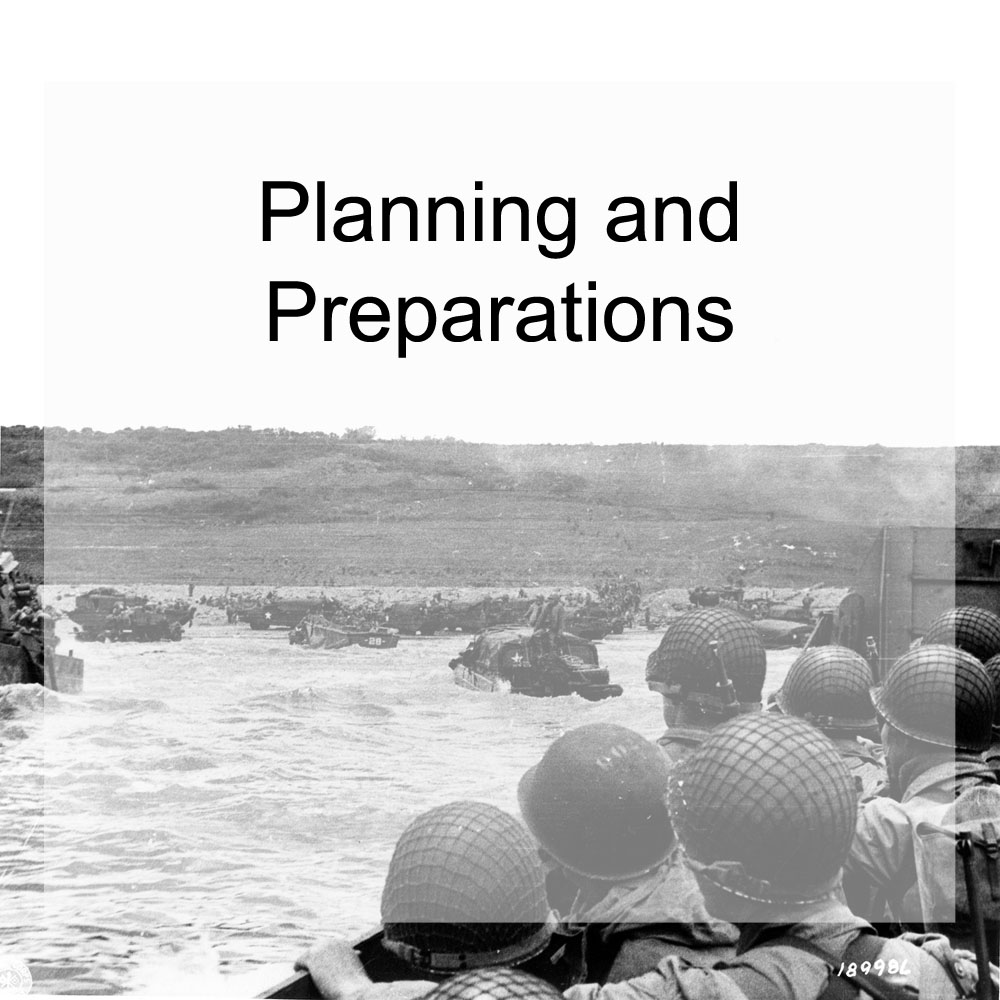
Planning and Preparations
Allied forces began planning for Operation Overlord more than a year before D-Day, June 6, 1944. Allied leaders selected the beaches at Normandy for their assault. The beaches were accessible, could be covered from the air, and were adjacent to the deep-water port of Cherbourg, which would be necessary for the logistics of fighting a prolonged war in Europe.
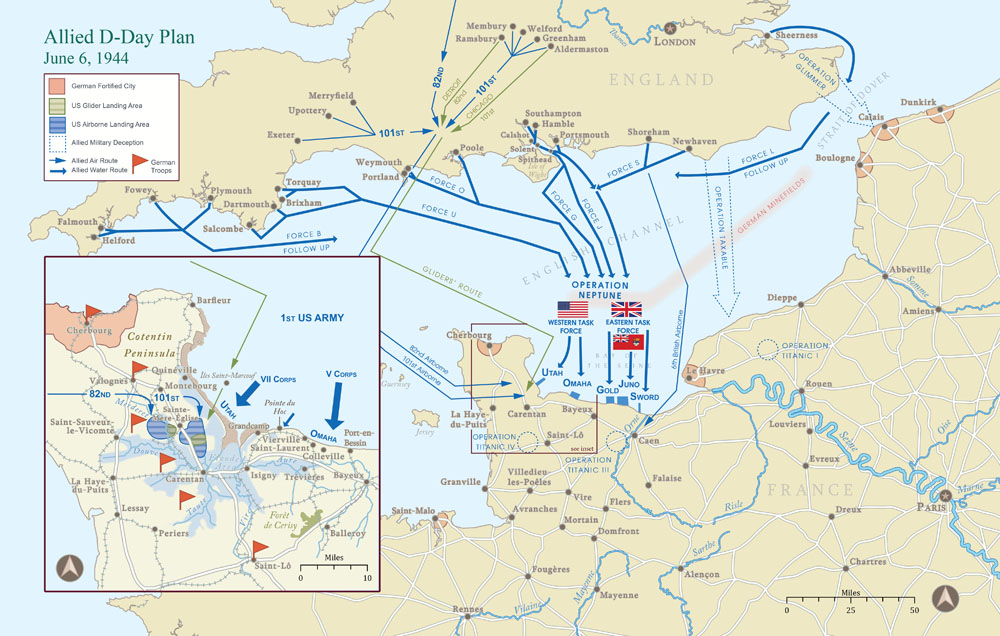
Allied D-Day Plan
The D-Day plan was for Allied soldiers to land on five beaches – codenamed Utah, Omaha, Gold, Juno, and Sword – and overwhelm the German defenders, breaking through the Atlantic wall.
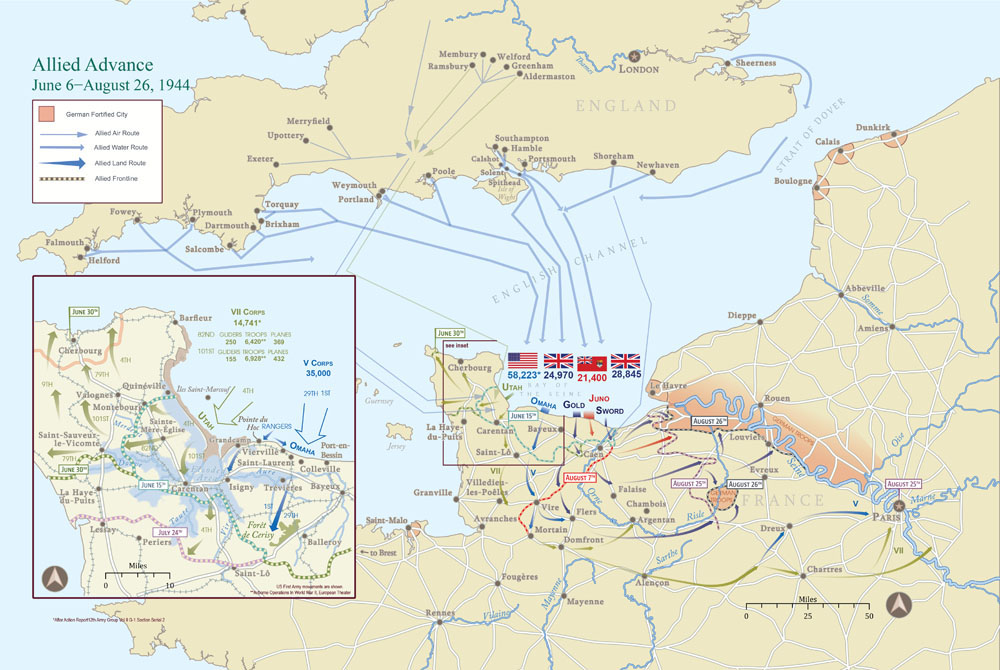
Allied Advance
Reinforcements continued to arrive and support the advancing Allied soldiers for weeks following D-Day, supporting the mission to capture of the Cotentin Peninsula by the end of the month.
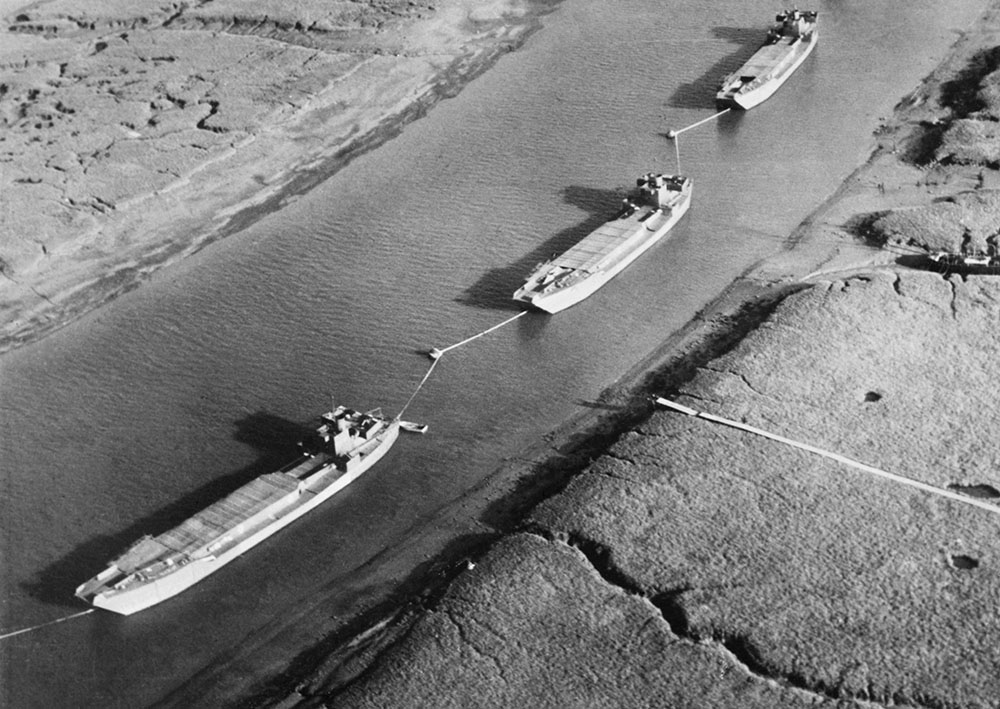
Inflatable Landing Craft Used in Deception Campaign
Designed to accompany the fictitious First US Army Group led by General George Patton, the decoy landing craft were stationed along the English coast opposite Pas-de-Calais to convince the Germans an invasion was being mounted there.
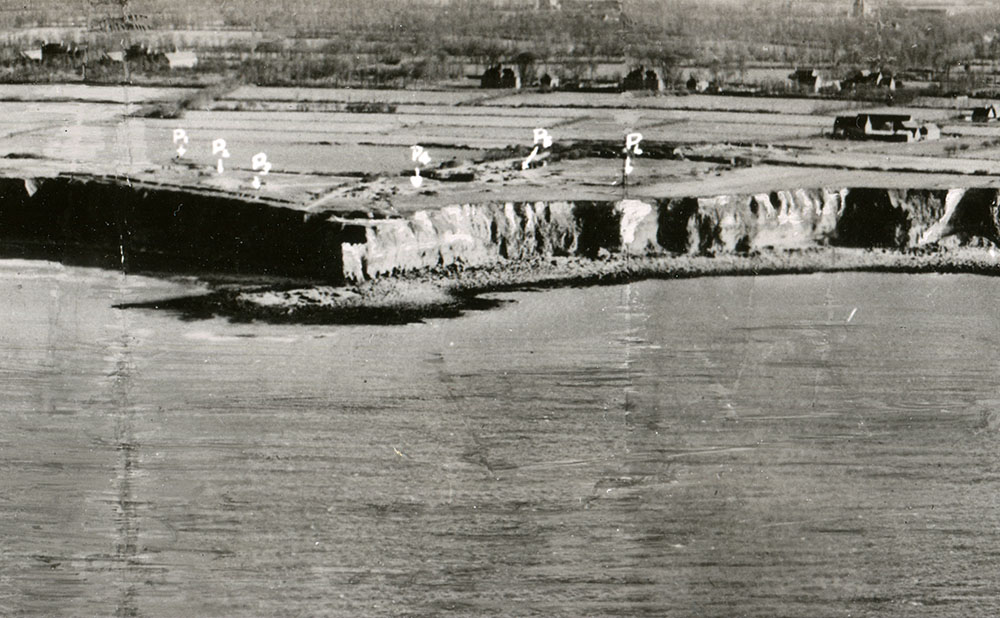
Allied Aerial Reconnaissance of Pointe du Hoc
For months, Allied commanders poured over aerial reconnaissance of the French coast, seeking the best place to land the amphibious assault. Allied commanders utilized annotated reconnaissance photos to determine the positions of German artillery at Pointe du Hoc.
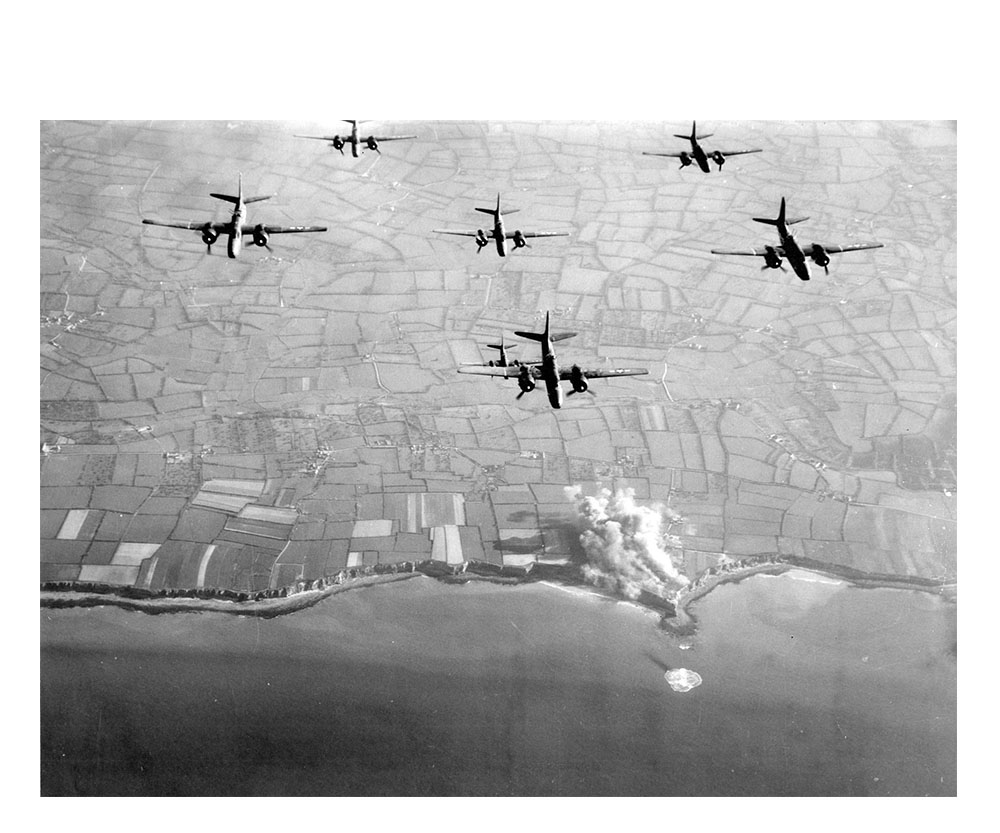
Douglas A-20 Havocs (DB-7) Bomb Pointe du Hoc
For months, Allied commanders poured over aerial reconnaissance of the French coast, seeking the best place to land the amphibious assault. Annotated reconnaissance photos were used to determine the positions of German artillery at Pointe du Hoc, allowing for later bombing runs illustrated here by Douglas A-20 Havocs dropping their 1,000-pound payloads on the German gun emplacements.
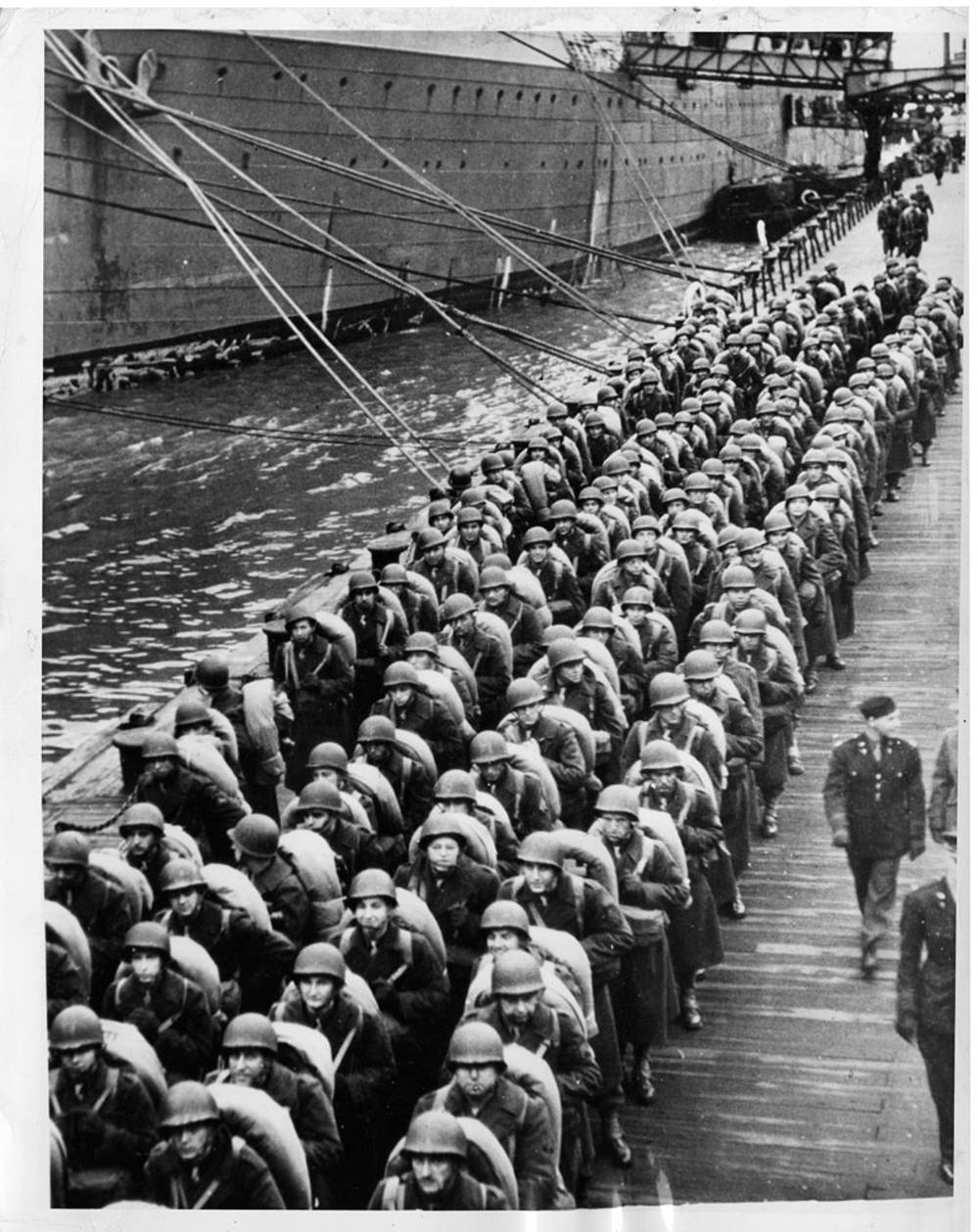
American Soldiers Prepare to Board Transports in Southern England
An American quartermaster battalion line an English pier waiting to board a transport for shipment to a new station.
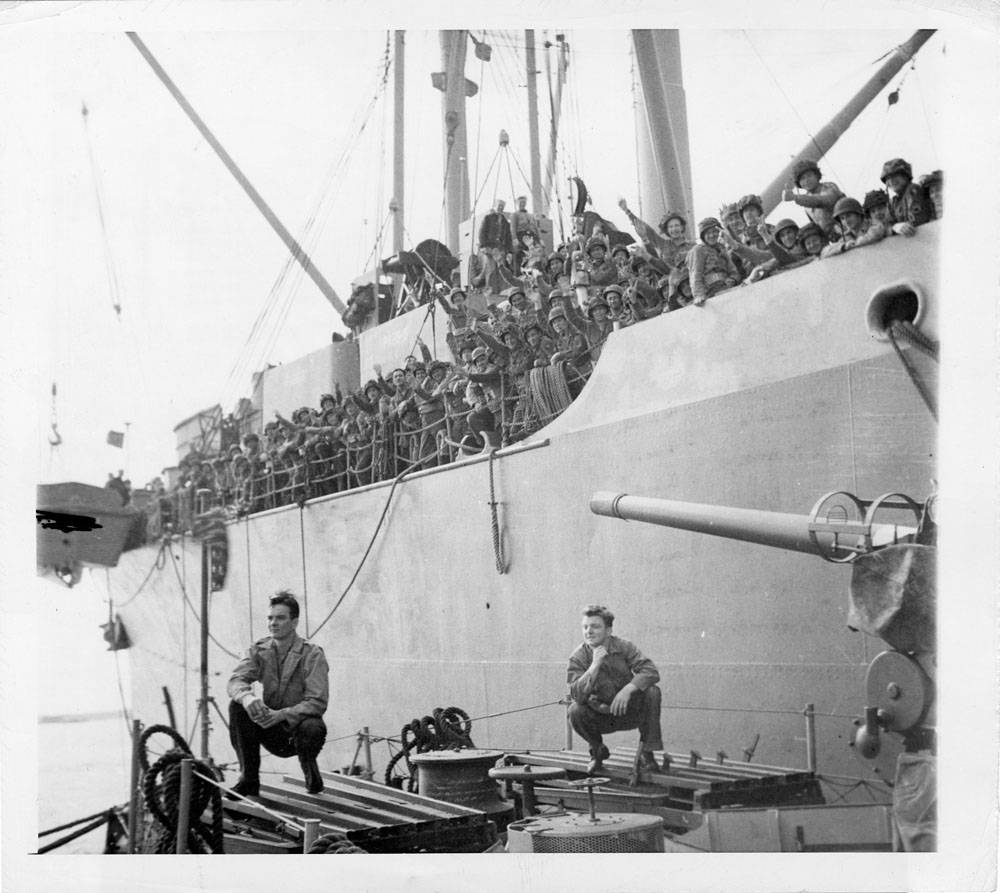
American Troops Aboard a Transport Ship Headed to France
Allied assault troops wave jubilantly from aboard a transport which is pulling out from a British embarkation point enroute to France and the long-awaited invasion.
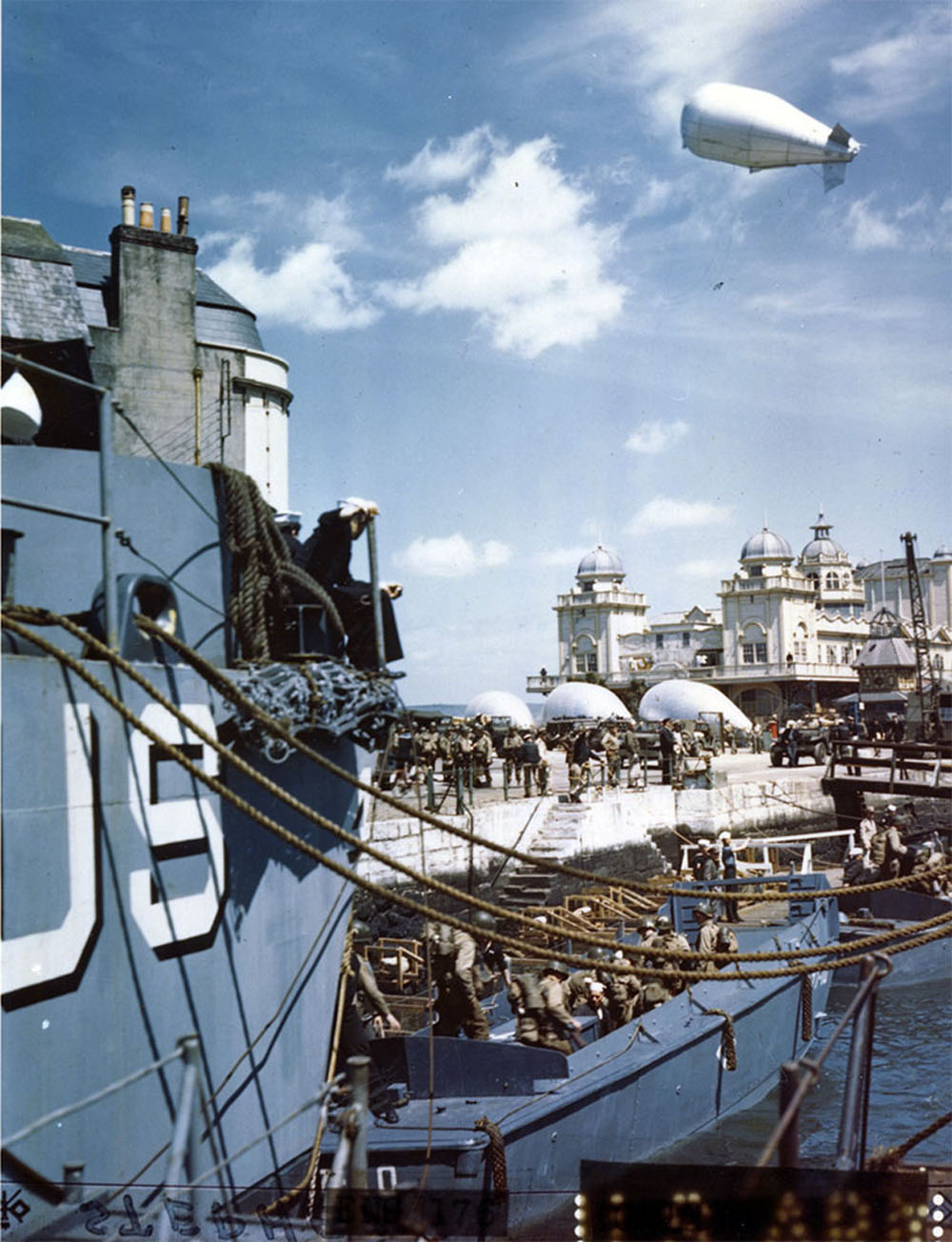
American Infantryman Board Landing Craft in England
American troops at a British port descend into barges which will take them to troop to Hitler’s Fortress Europe.
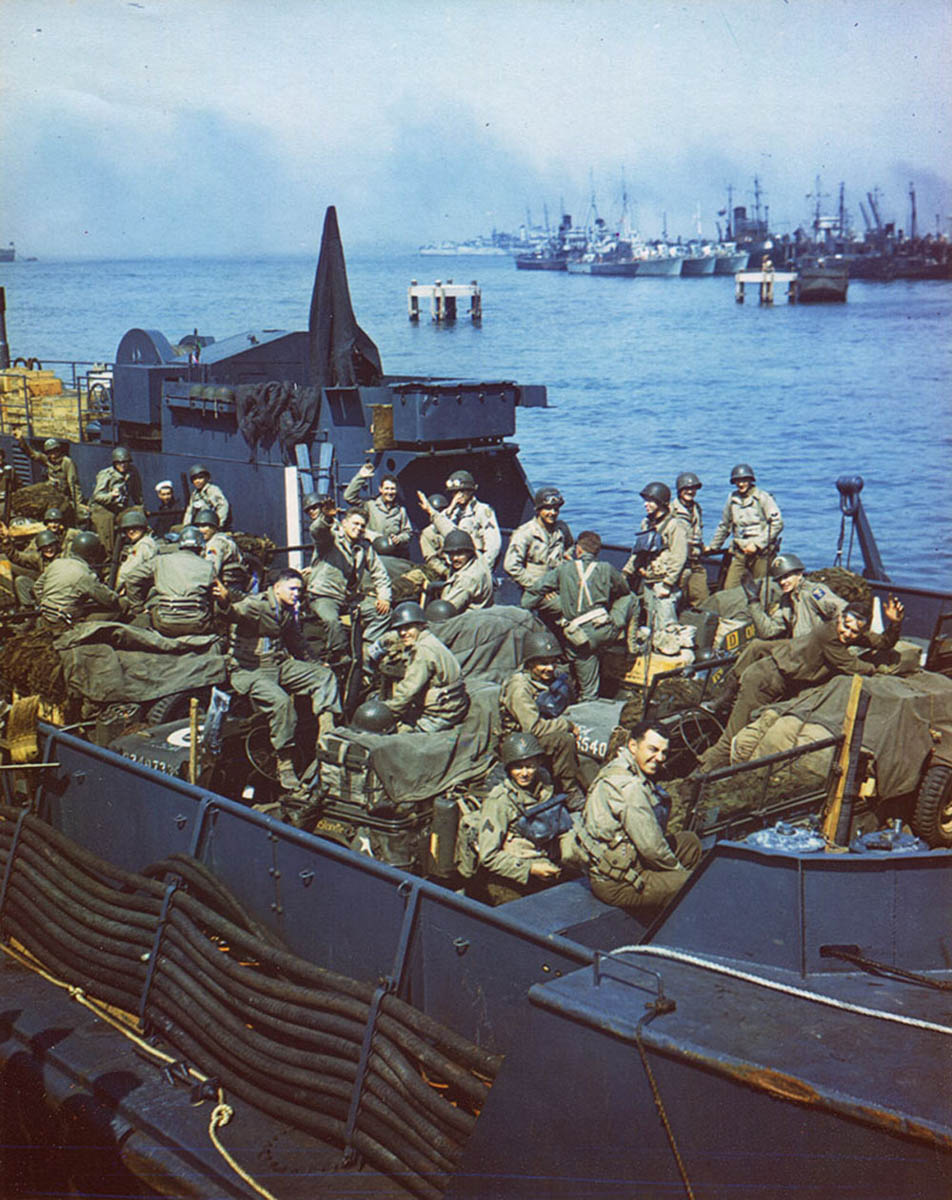
American Soldiers Aboard an LCT Prepping for Normandy Invasion
One of the many types of vessels used to transport American soldiers was a Landing Craft, Tank (LCT), shown here with soldiers packed in among vehicles and supplies.
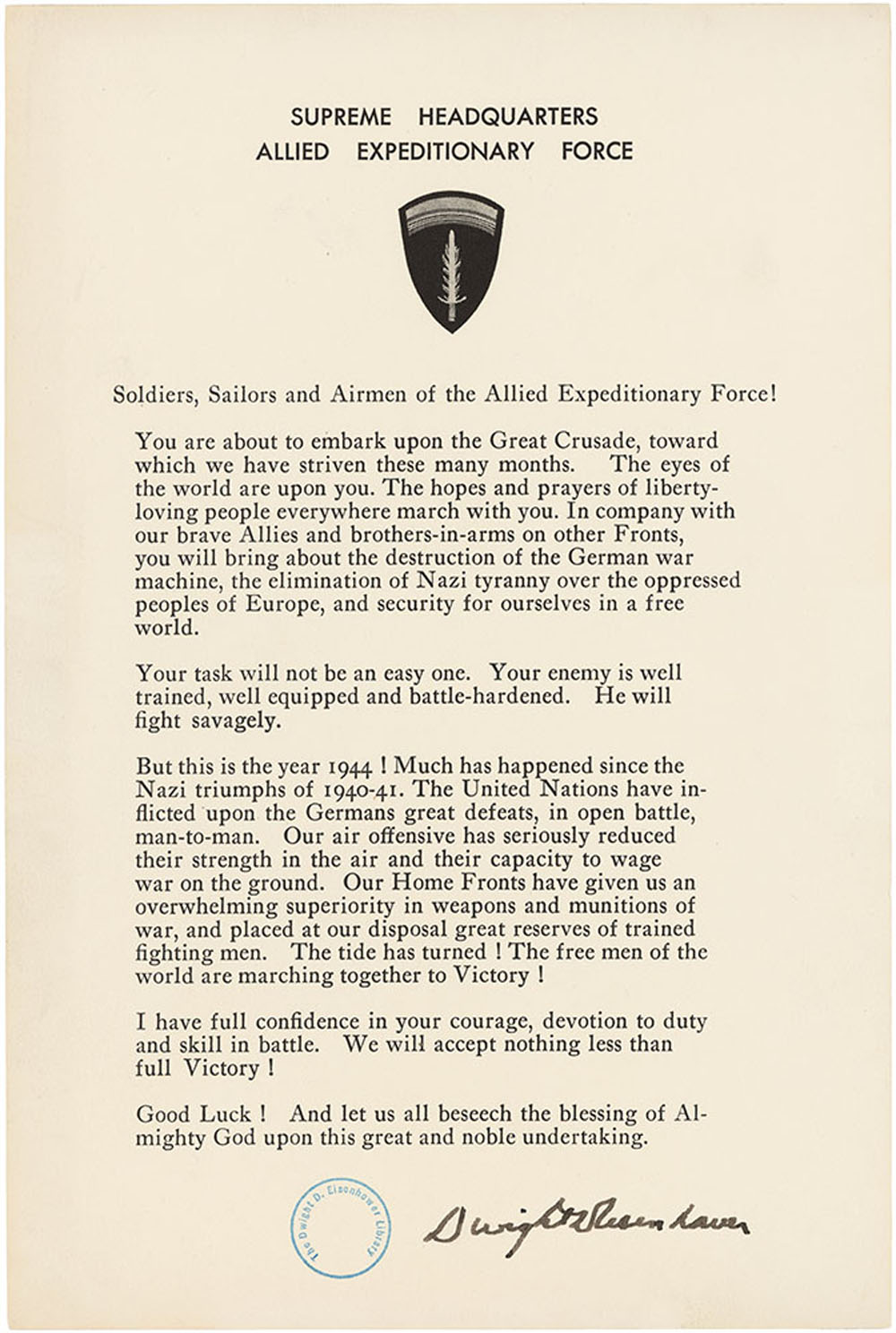
General Eisenhower’s Order of the Day
Before the invasion began, General Eisenhower had this order of the day distributed among the invasion force to highlight what was at stake and to inspire his men.
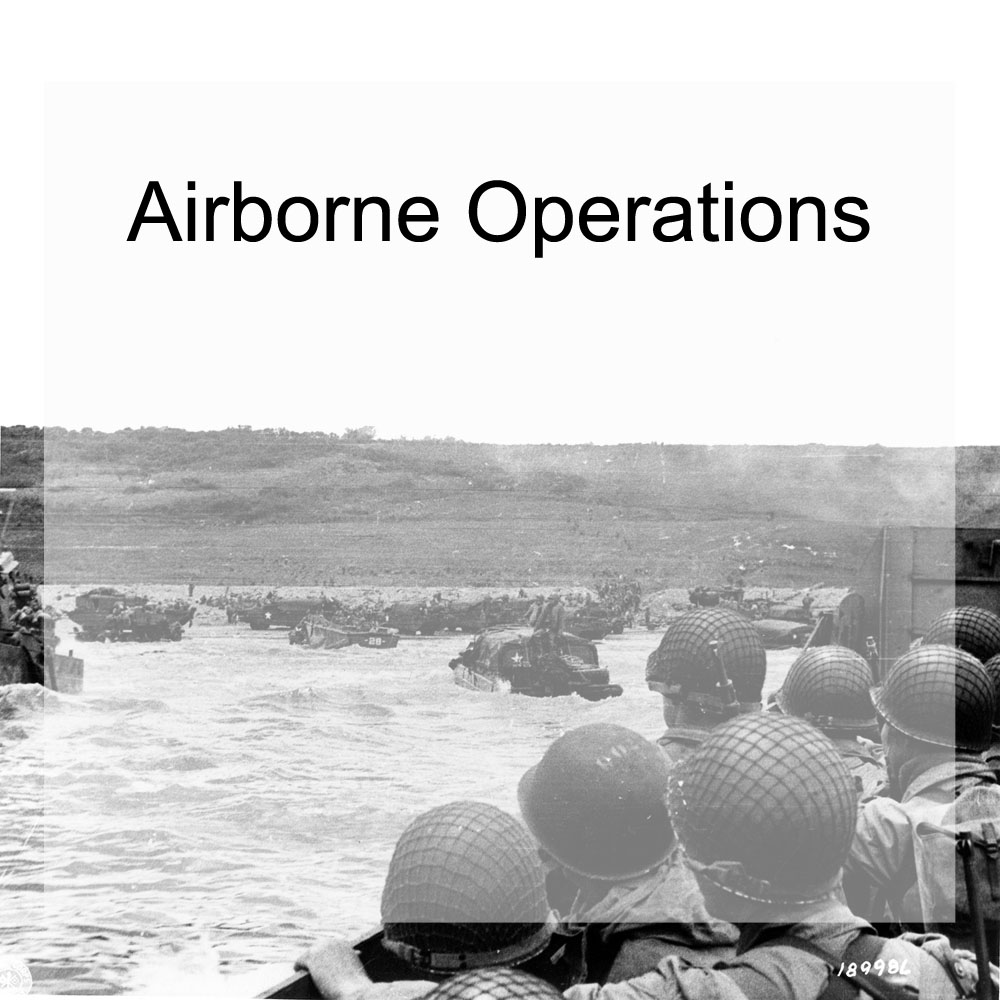
Airborne Operations
The success of Operation Overlord was due in large part to the actions of the nearly 20,000 Allied paratroopers and glider infantrymen who dropped behind the German lines early on June 6.
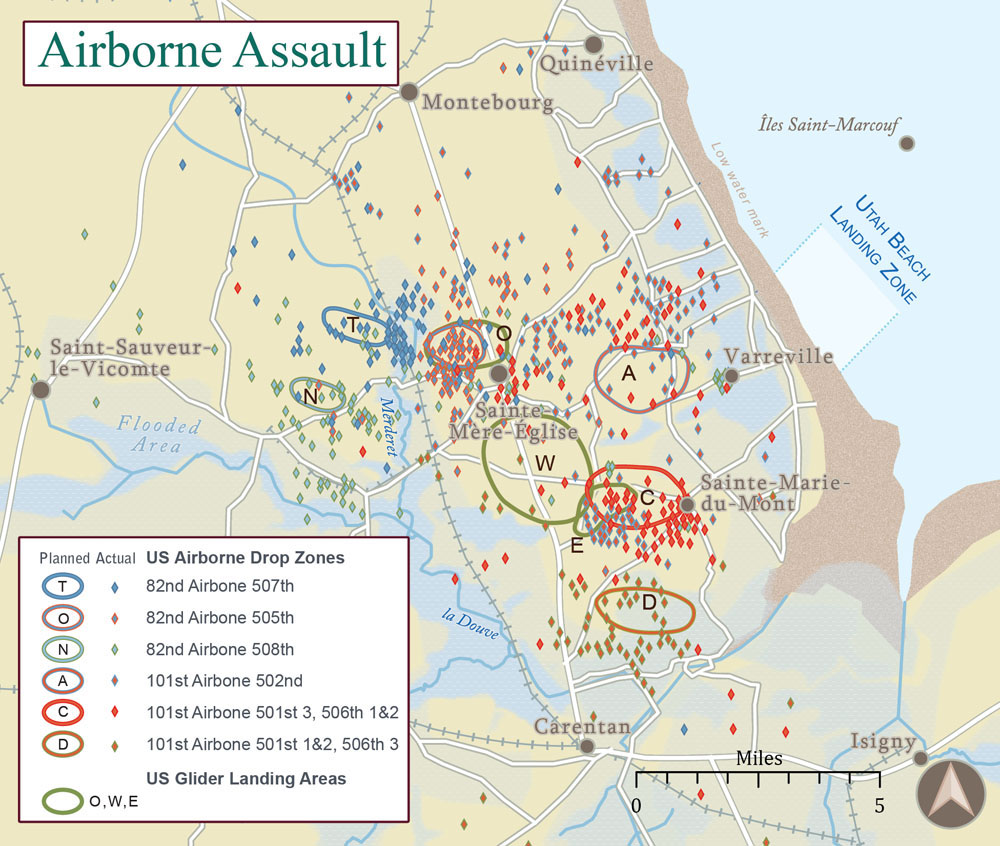
Airborne Assault Map for D-Day
This map highlights how chaotic the airborne assault was for the American paratroopers once anti-aircraft fire began.
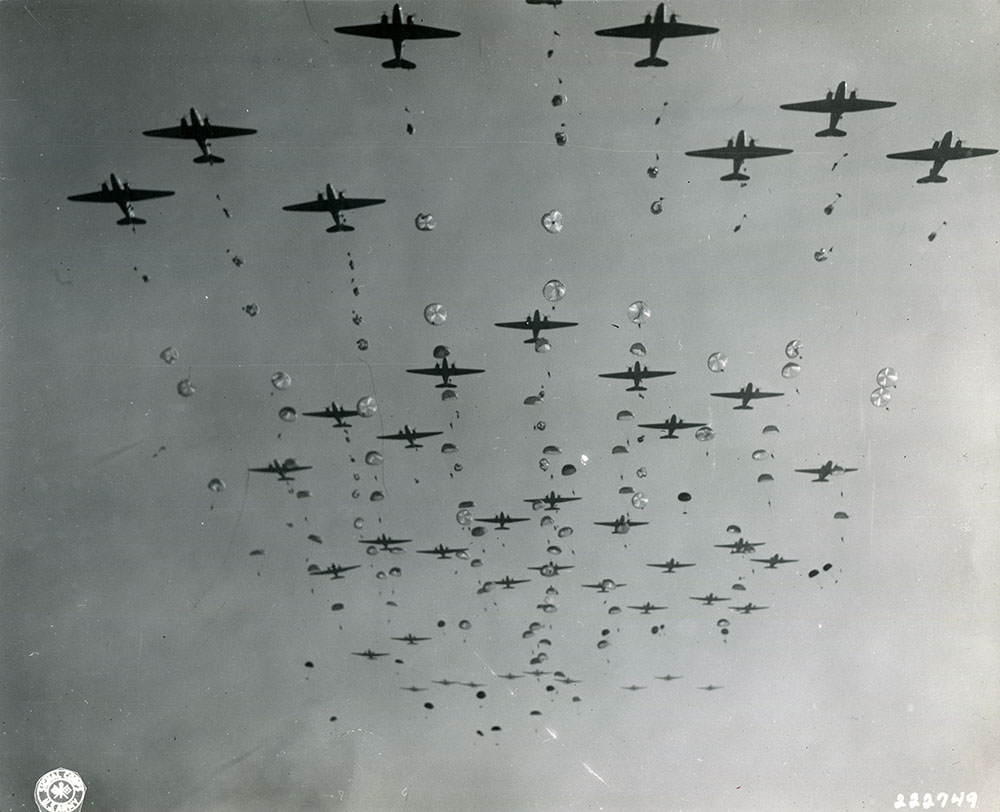
Airborne Troops Perform a Practice Drop during Training
Practice jumping for American paratroopers in preparation of the Allied invasion.
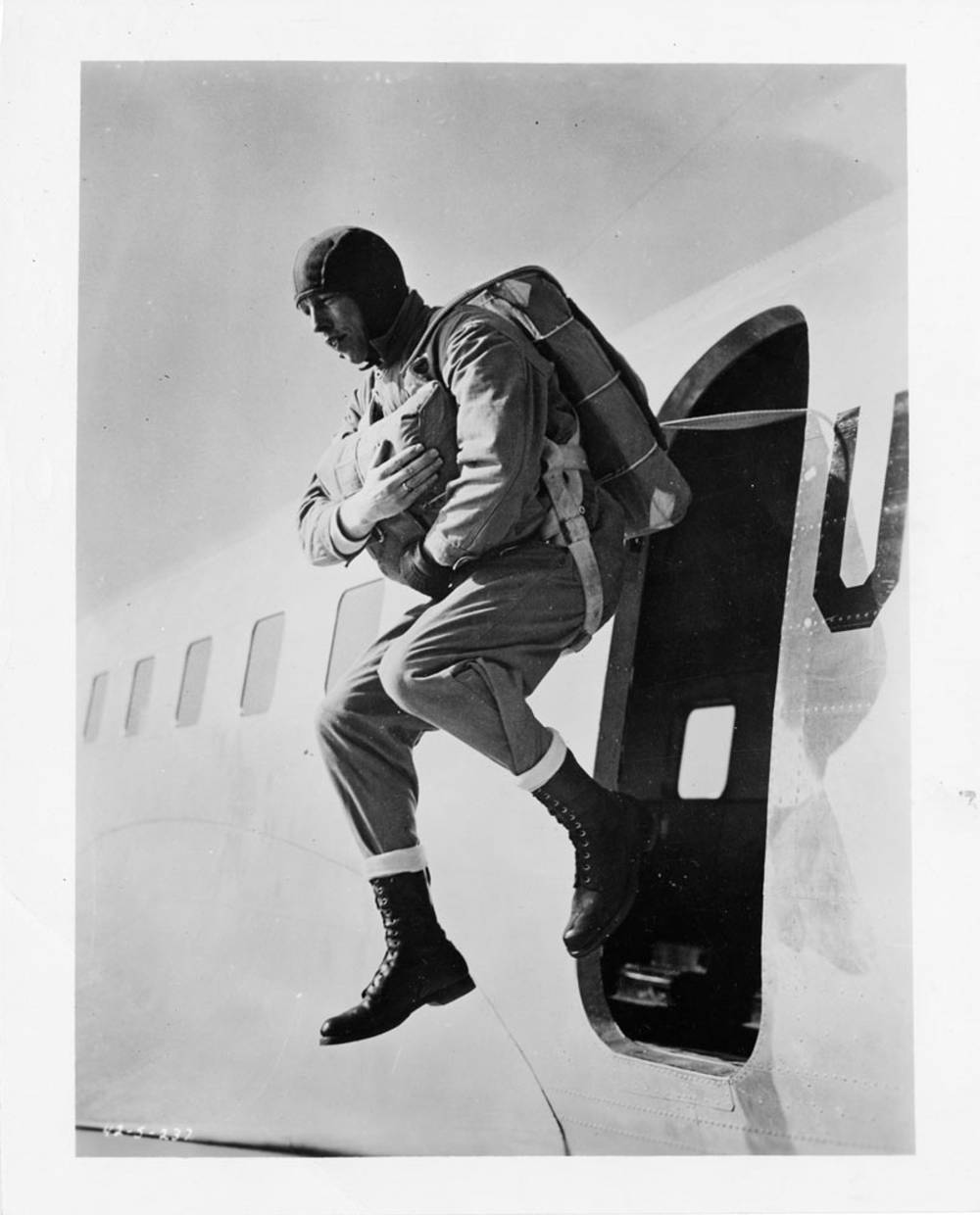
Airborne Soldier Illustrating a Jump from a Plane during Training
Practice jumping for American paratroopers in preparation of the Allied invasion.
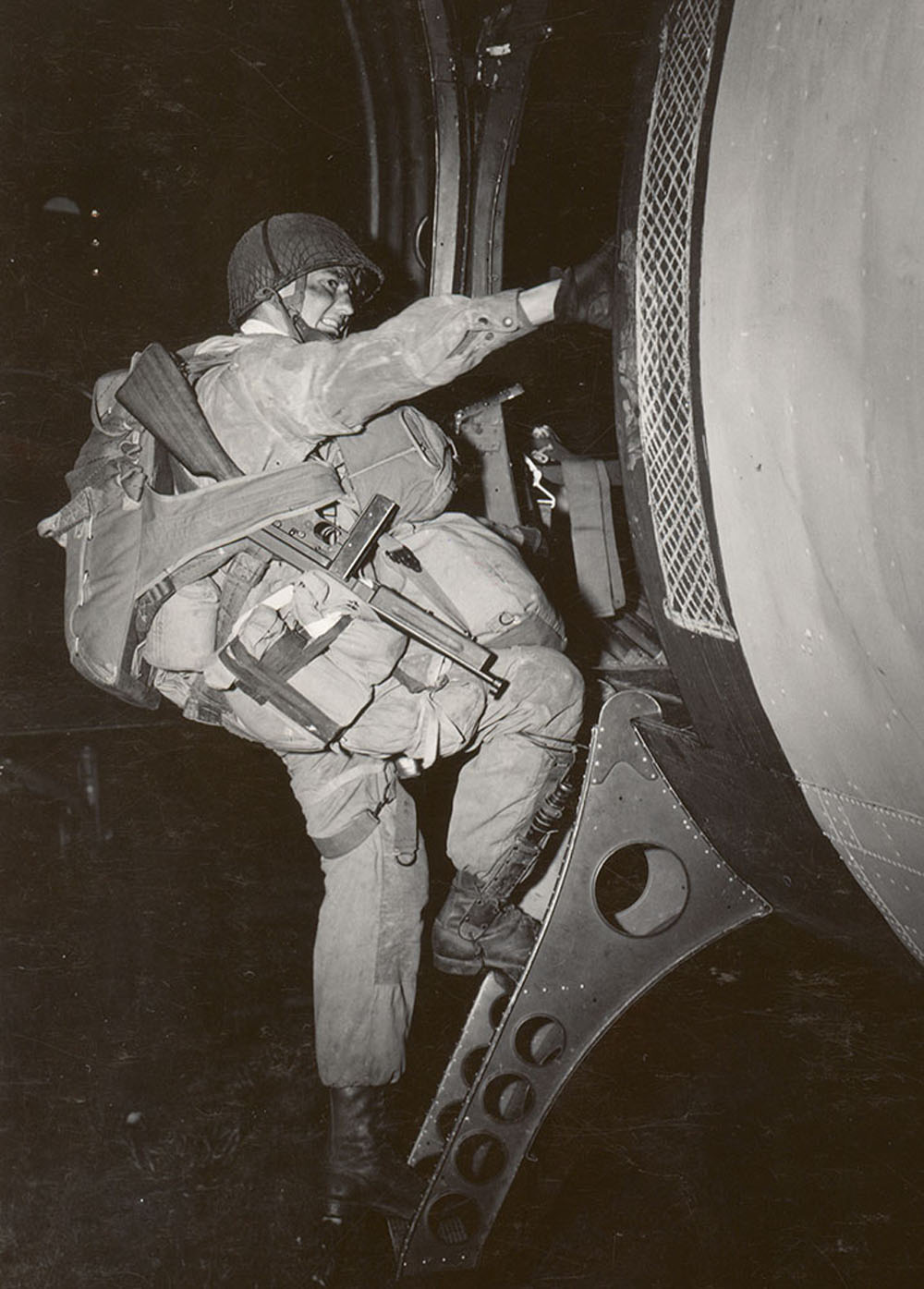
Technician Fourth Grade Joseph F. Gorenc of 3rd Battalion, 506th Parachute Infantry Regiment, 101st Airborne Division Boards a C-47
The paratroopers’ mission on D-Day was to capture vital causeways and villages that would allow them to hold off German reinforcements and protect the flanks of the amphibious landings.
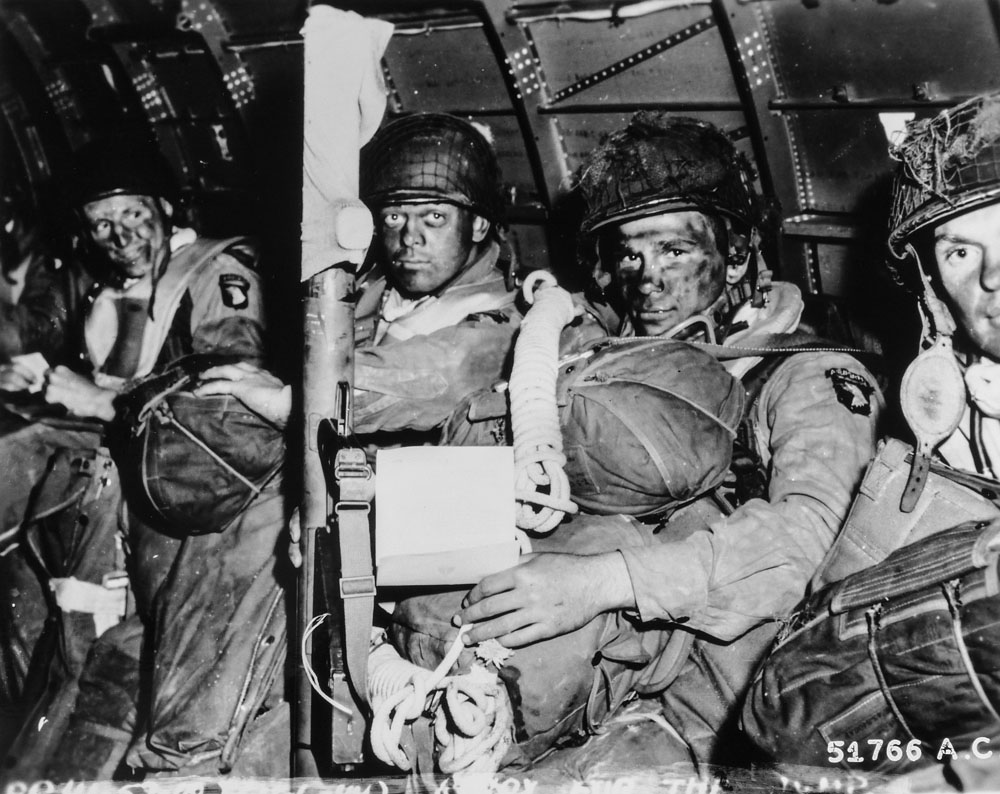
Members of the 101st Airborne Division Loaded in a C-47 on the Evening of June 5
Resolute faces of paratroopers just before they took off for the initial assault of D-Day. Note Eisenhower's D-Day order in hands of paratrooper in foreground.
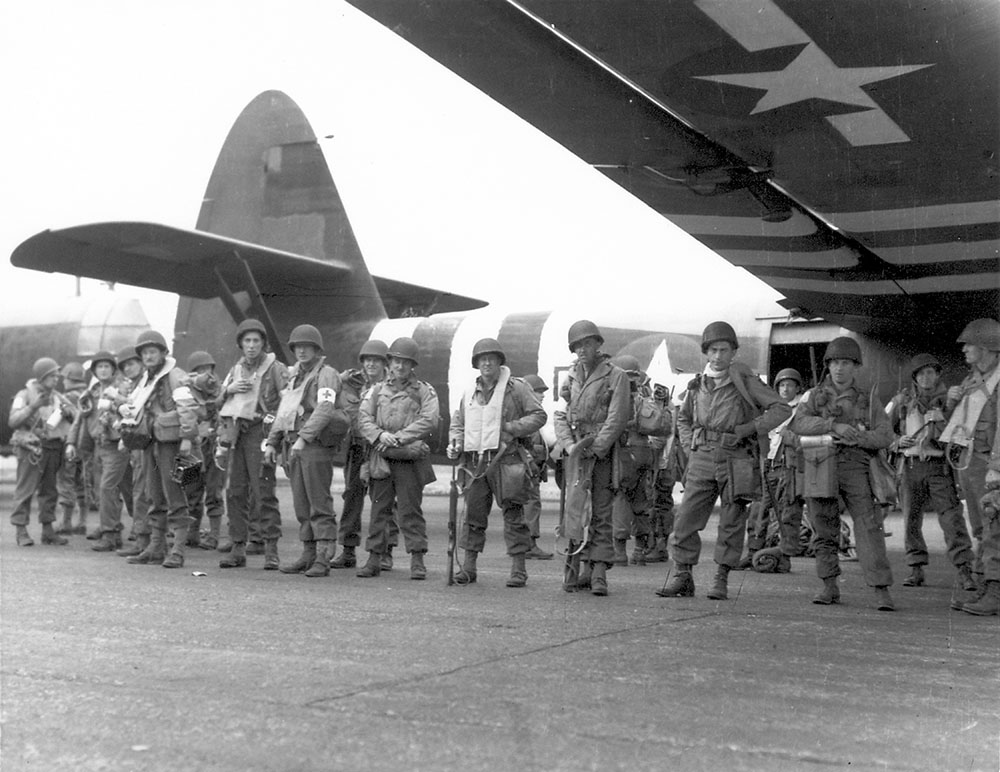
Glider Infantry Ready Themselves for Their Flight into France
Thousands of infantry would land in Normandy in gliders, bringing with them jeeps and bulldozers to help clear the area for advancing troops.
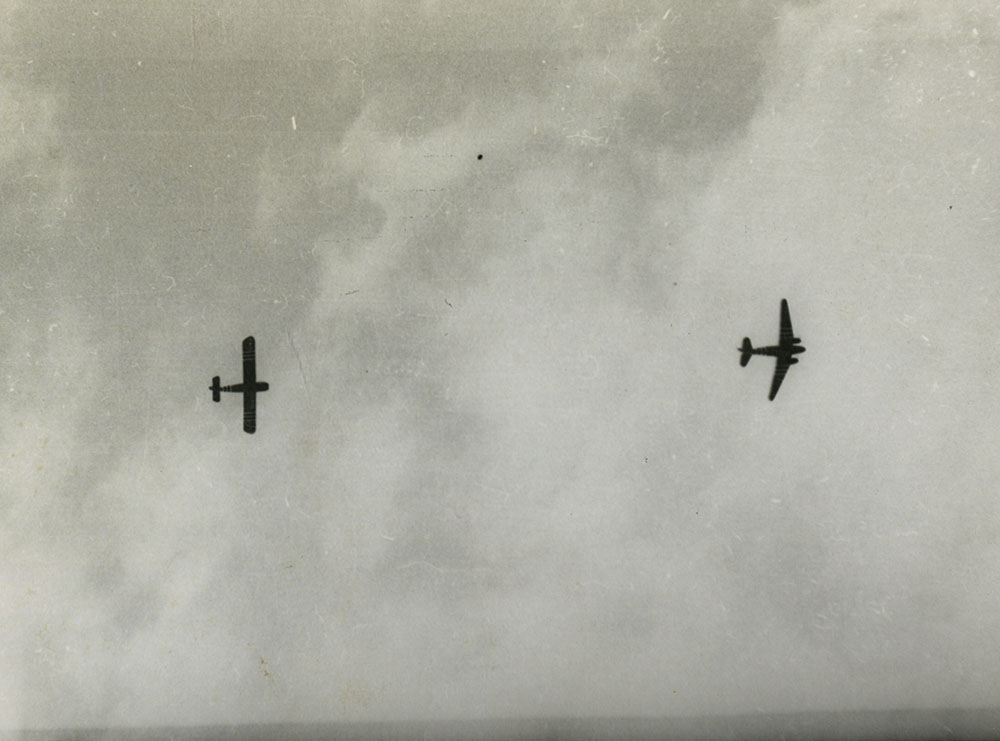
An Allied C-47 Pulls a Glider across the English Channel
View looking up to C-47 pulling glider across sky.
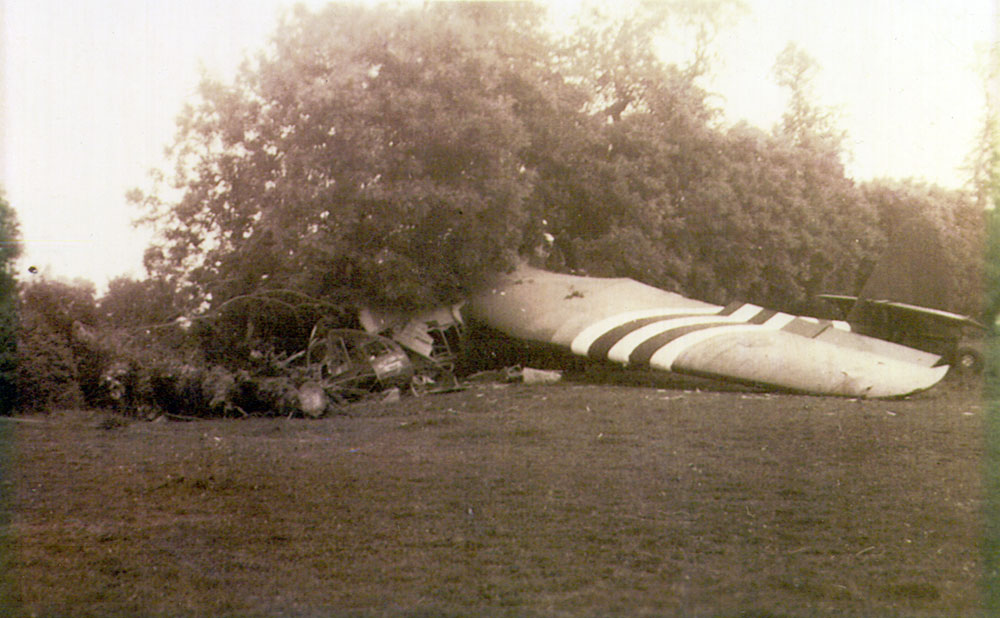
An Allied Glider That Has Crashed into a Norman Hedgerow
Predictions prior to the assault estimated that 70 percent of the gliders, and nearly 50 percent of the airborne troops, would become casualties on D-Day.
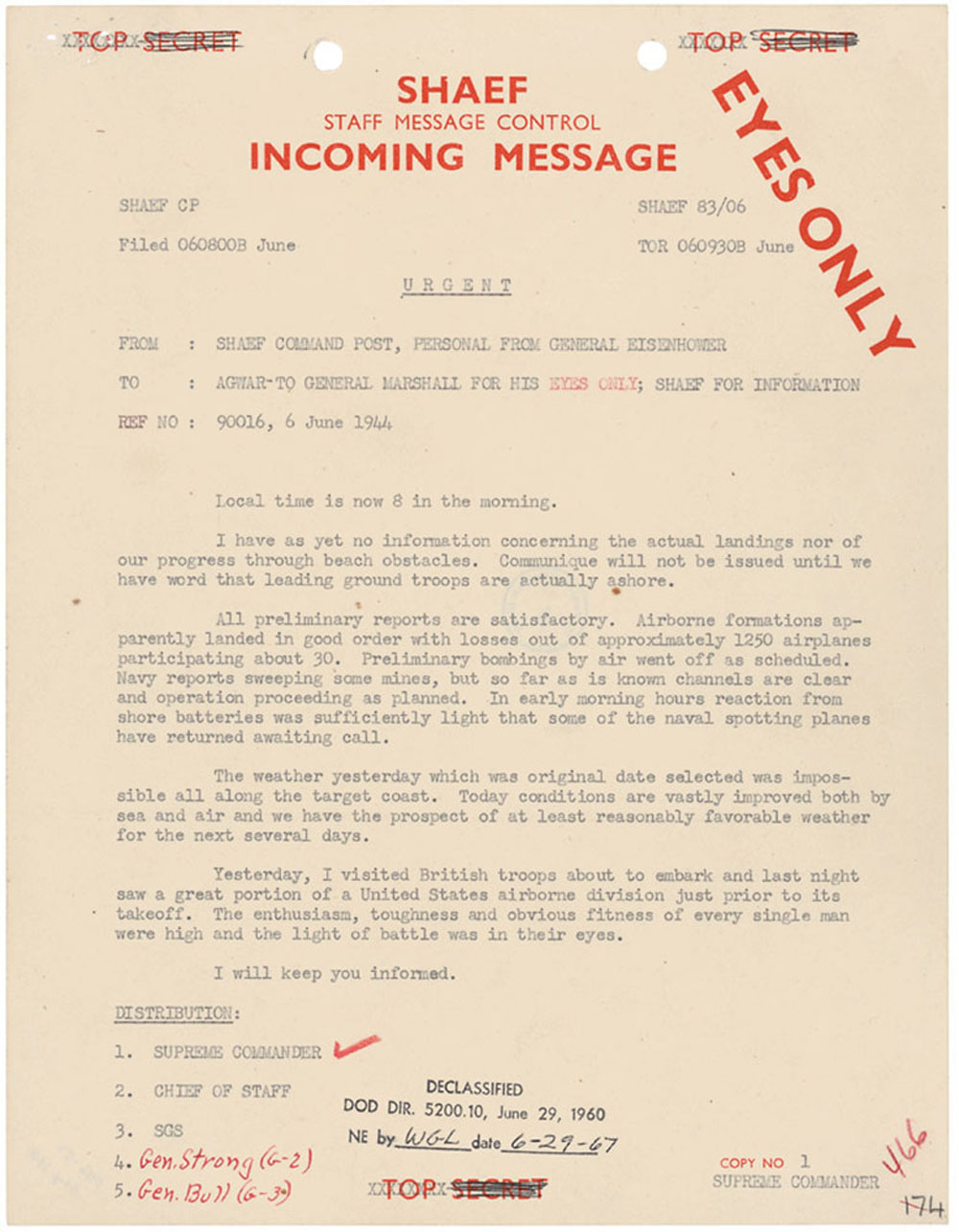
Secret Cable from General Eisenhower to General Marshall Reporting on Airborne Success of June 6
The cable from General Eisenhower highlights that losses among the more than 1,000 aircraft that took part in D-Day were not as severe as expected.
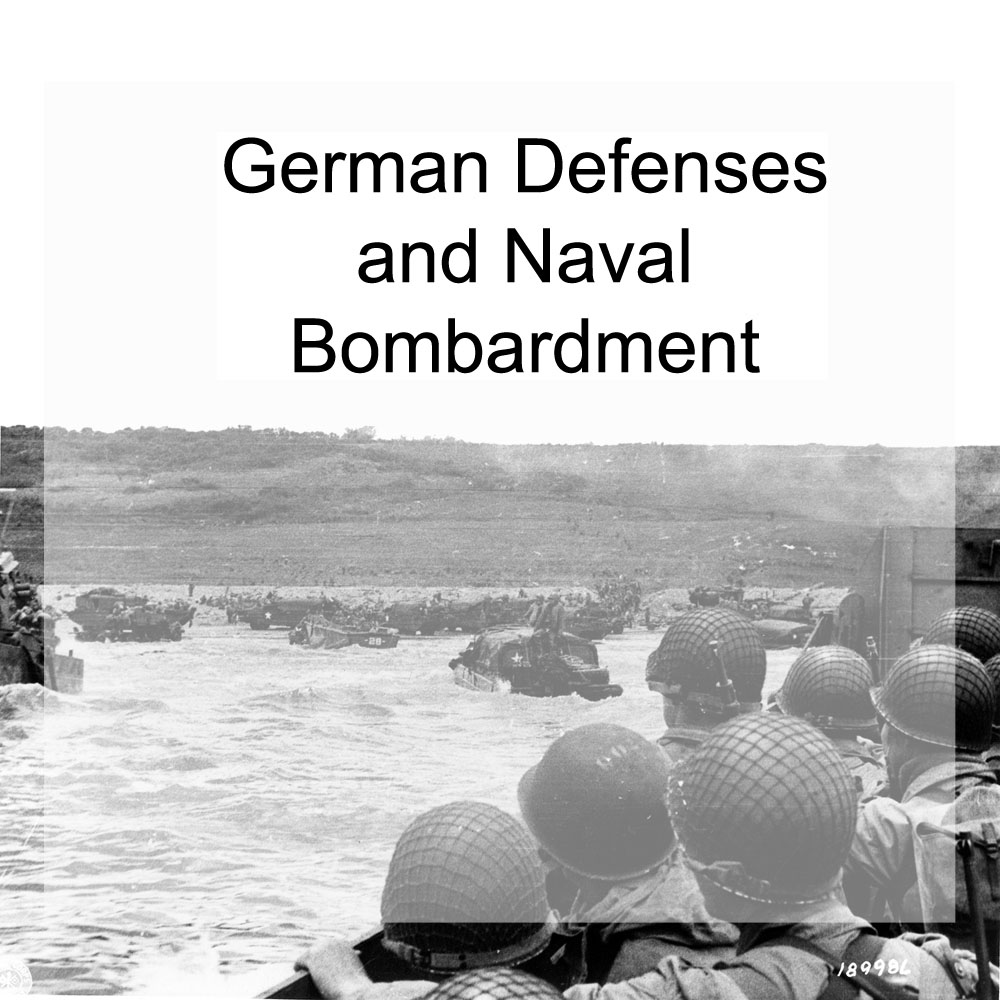
German Defenses and Naval Bombardment
The amphibious assault on Normandy — codenamed Operation Neptune — saw the deployment of more than 175,000 men landing across five beaches, covering more than 50 miles of the French coastline.
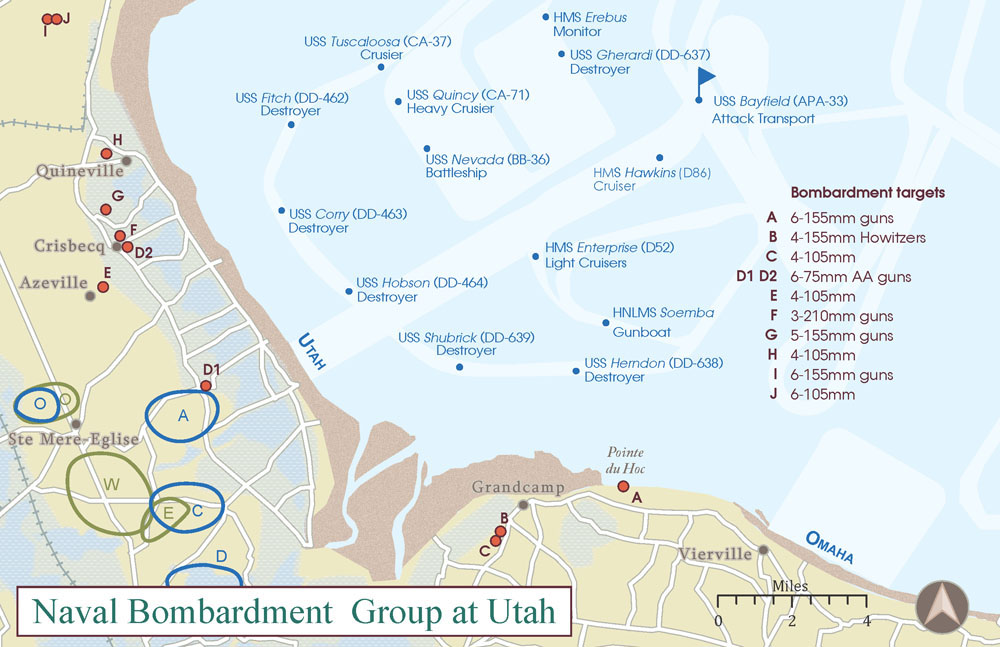
Naval Bombardment Group at Utah Beach
The naval bombardment focused on knocking out as many of the German guns and defensive positions on the beaches as possible. On Utah Beach alone, the Wehrmacht had 110 guns, ranging in size from 75mm to 210mm.
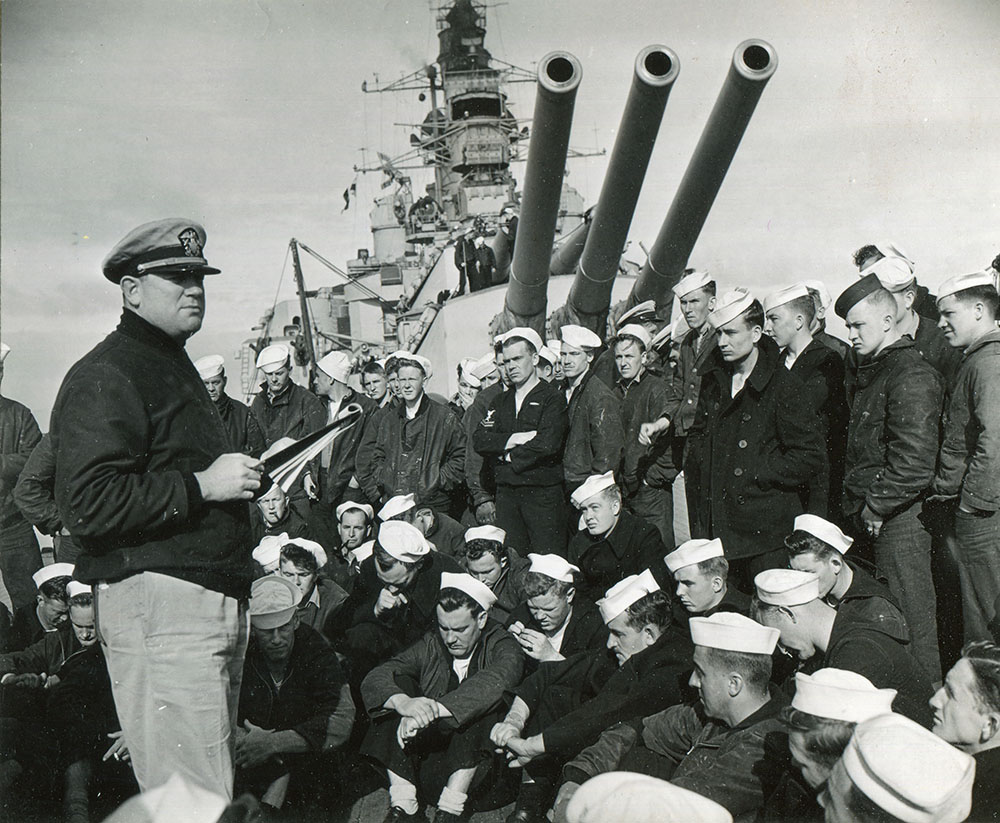
Naval Officer Briefs Sailors aboard USS Nevada about the Upcoming Naval Engagement
Aboard USS Nevada, a naval officer reads a letter from the Western Naval Task Force commander, Admiral Alan Kirk, describing when and where the naval bombardment will occur.
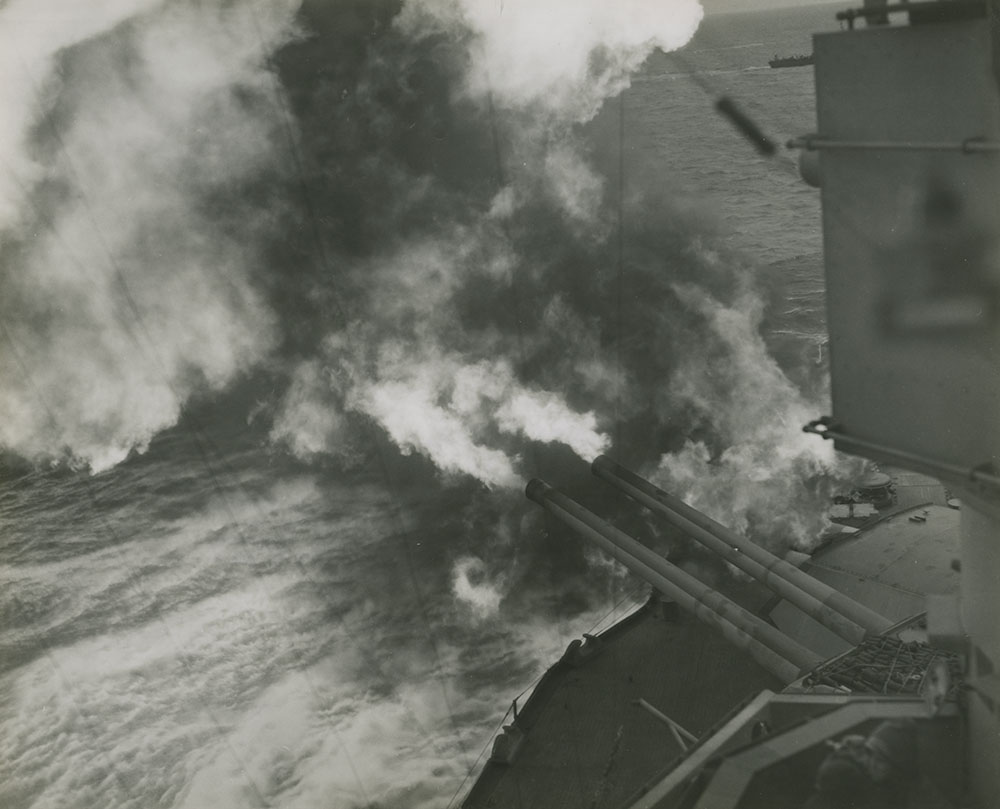
USS Nevada Fires Its 14-Inch Guns at the German Defenses on Utah Beach
U.S.S. Nevada pours an obliterating hail of death on Nazi positions blocking the forward surge of Allied troops in France.
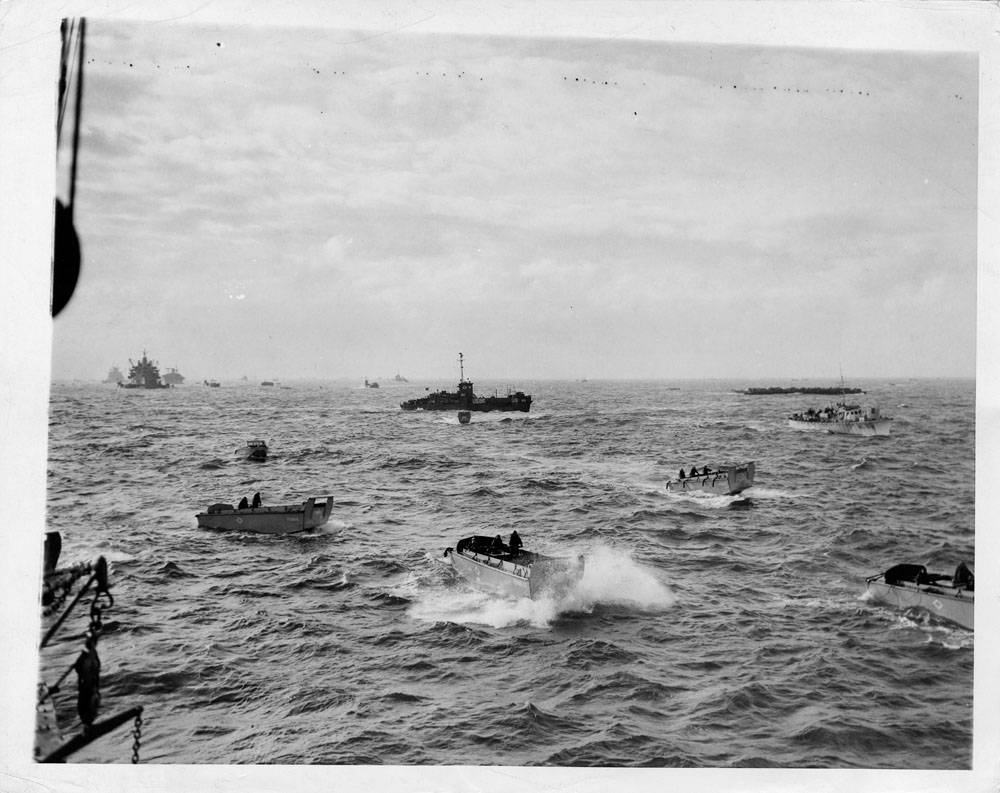
Allied Landing Craft and Other Naval Vessels Make Their Way toward the Beach
Landing craft of all types head through a choppy sea for the invasion beachhead along the coast of Normandy, during the early hours of the Allied landings.
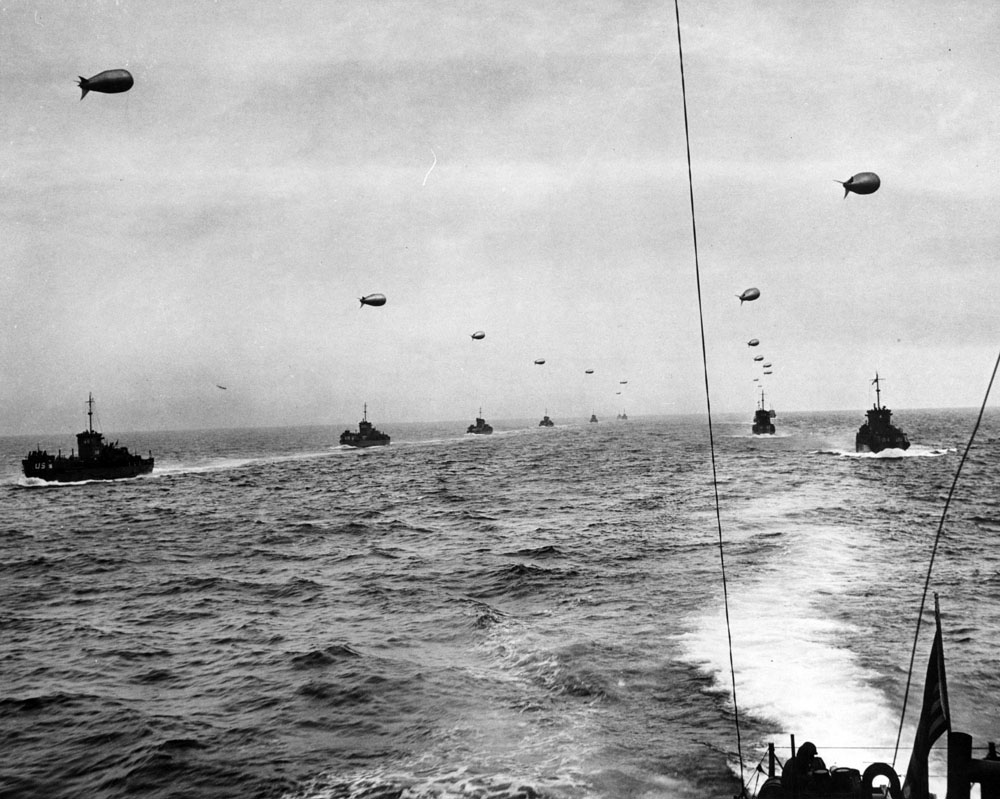
Flotilla of LCIs Make Their Way toward Normandy with Barrage Balloons Overhead
A convoy of Landing Craft Infantry (Large) sails across the English Channel toward the Normandy Invasion beaches on D-Day, 6 June 1944.
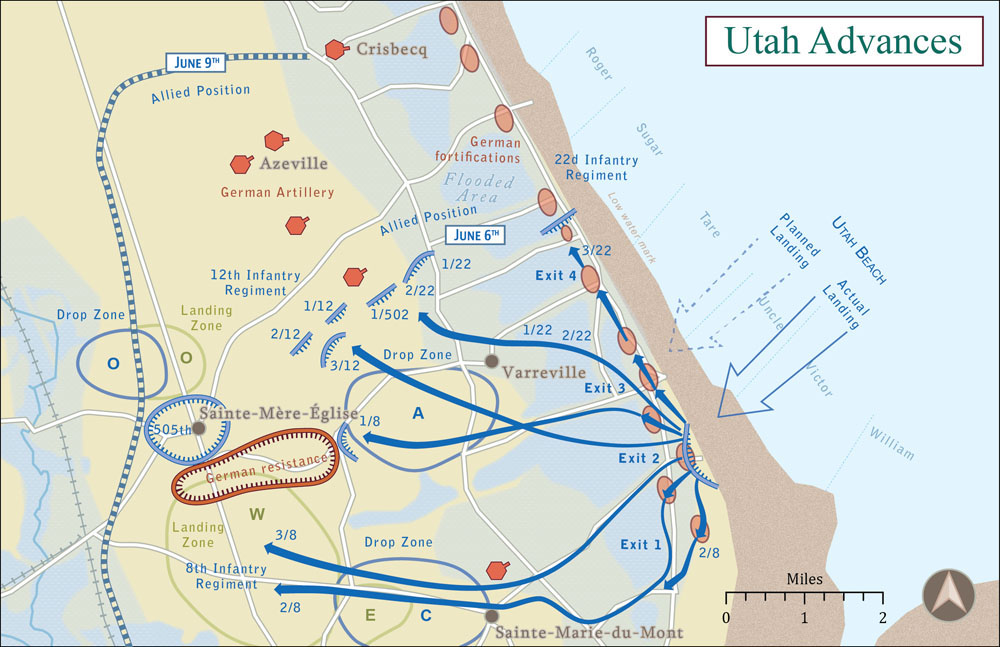
D-Day at Utah — Layout of Allied Approach
Overview of the Allied advancement at Omaha Beach during D-Day.
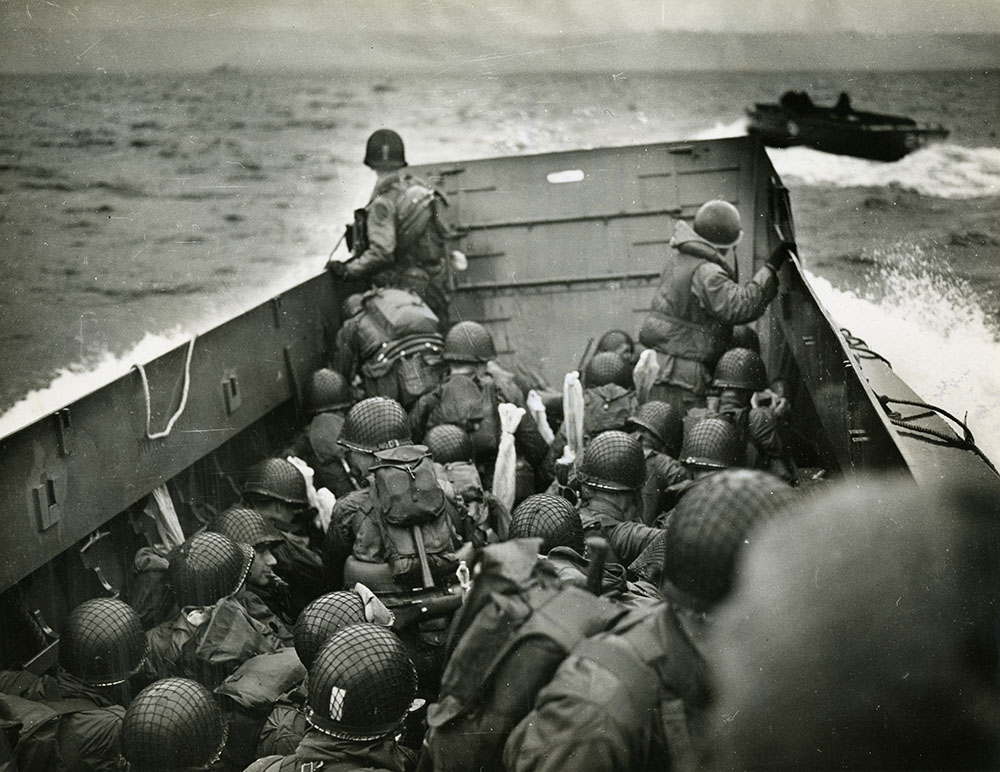
An LCVP with American Infantrymen Approaches Normandy
More than 1,000 Higgins boats made their way to shore on D-Day.
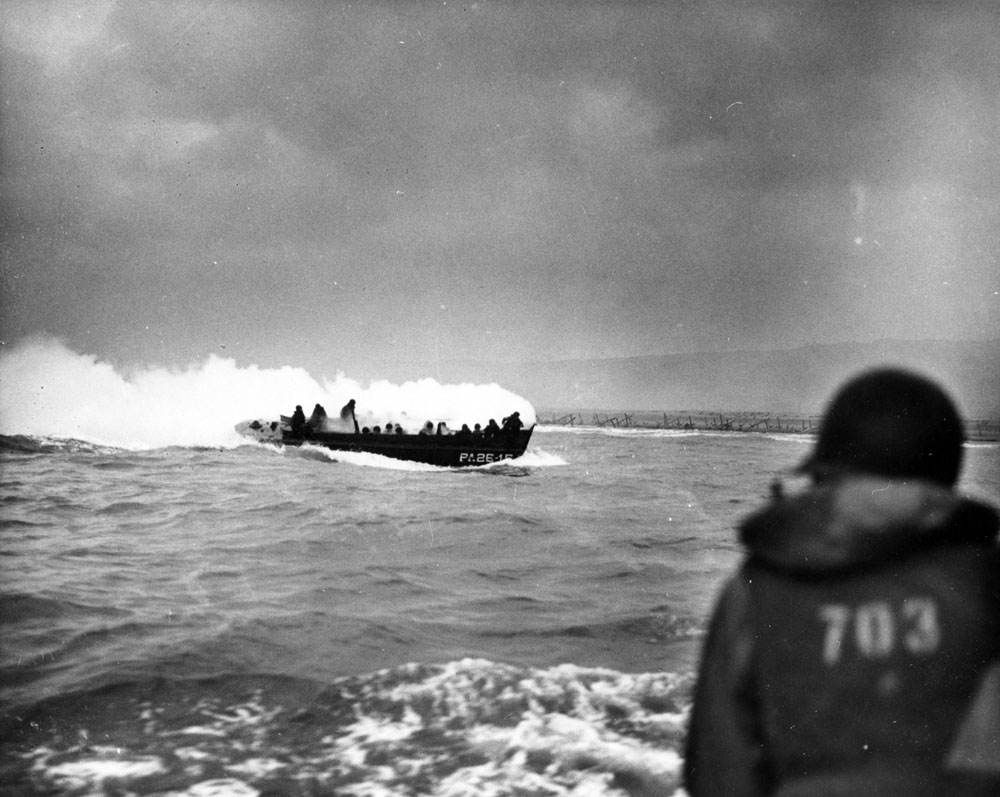
An LCVP Makes Its Way to Omaha Beach on Fire
A LCVP landing craft from USS Samuel Chase (APA-26) approaches Omaha Beach on D-Day, 6 June 1944.
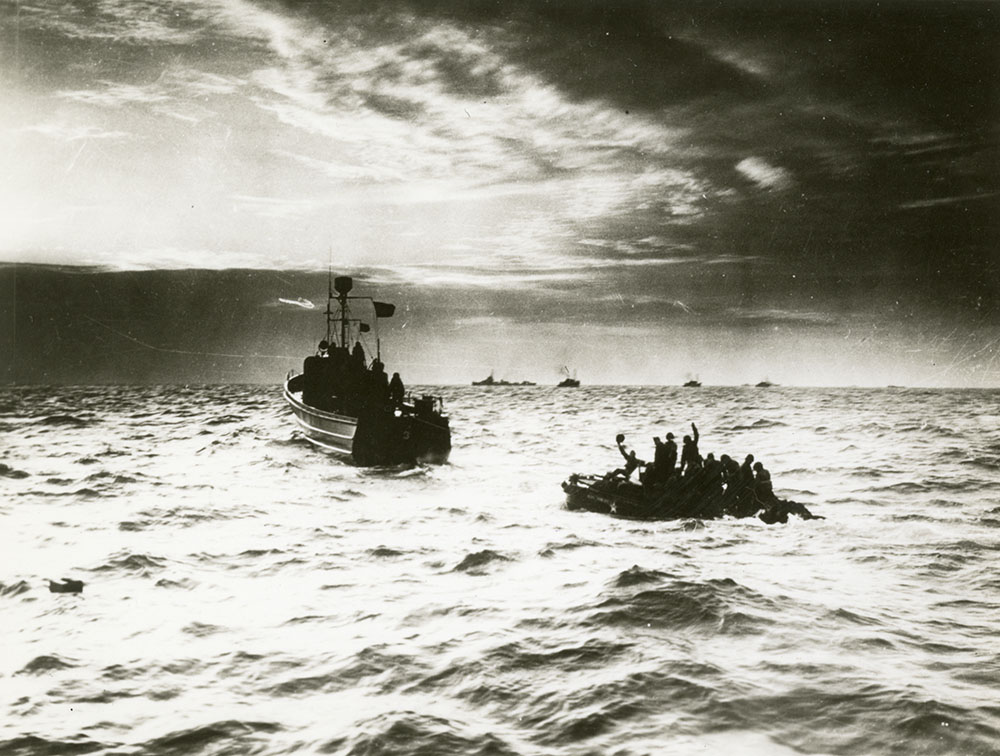
American Soldiers on Sinking Landing Barge Saved by Coast Guard
American soldiers on sinking landing barge saved by Coast Guard.
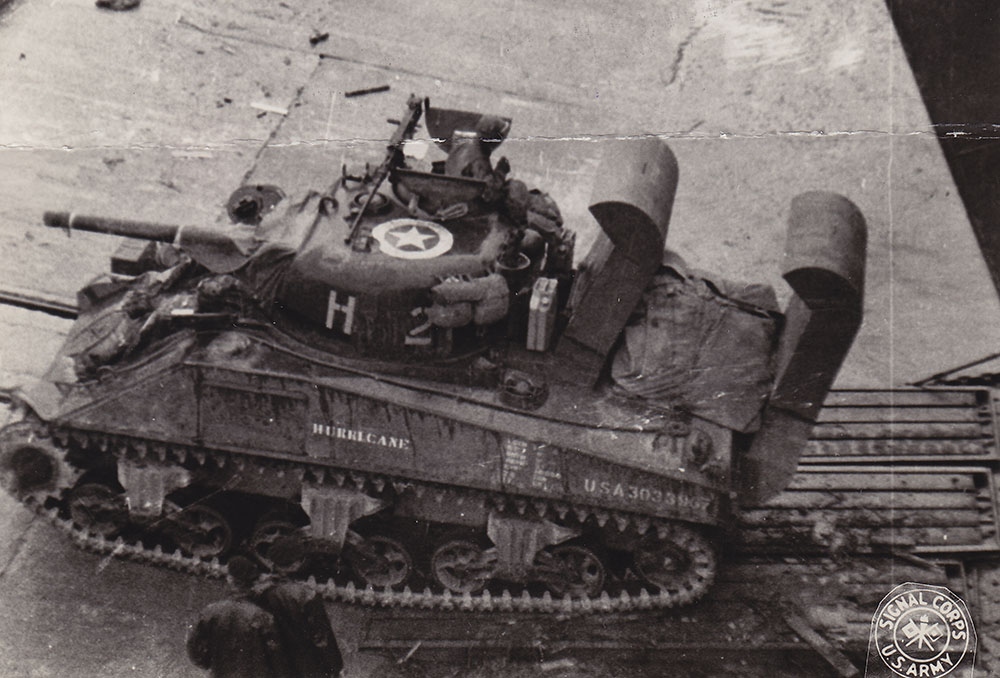
DD Tank Outfitted with a Snorkel Device on Its Intake and Exhaust
The Allied plan for D-Day was for Duplex Drive (DD) tanks to land just ahead of the infantry.
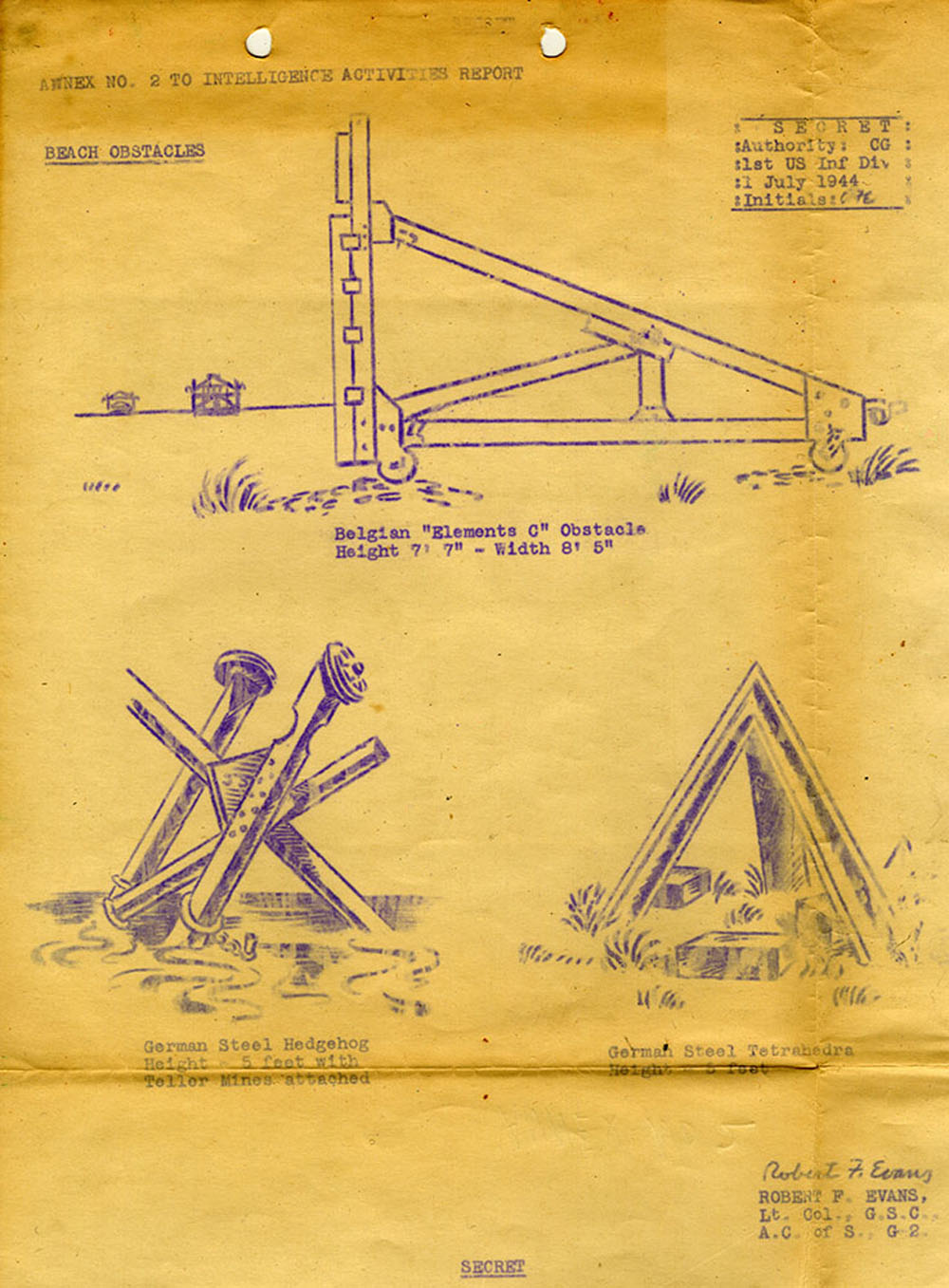
1st Infantry Division Intelligence Report Detailing German Beach Obstacles
Understanding that the Allies would have to make a beach assault, and believing the Normandy coast to be a possible landing site, Rommel had his troops erect obstacles along the beaches in the months leading up to D-Day.
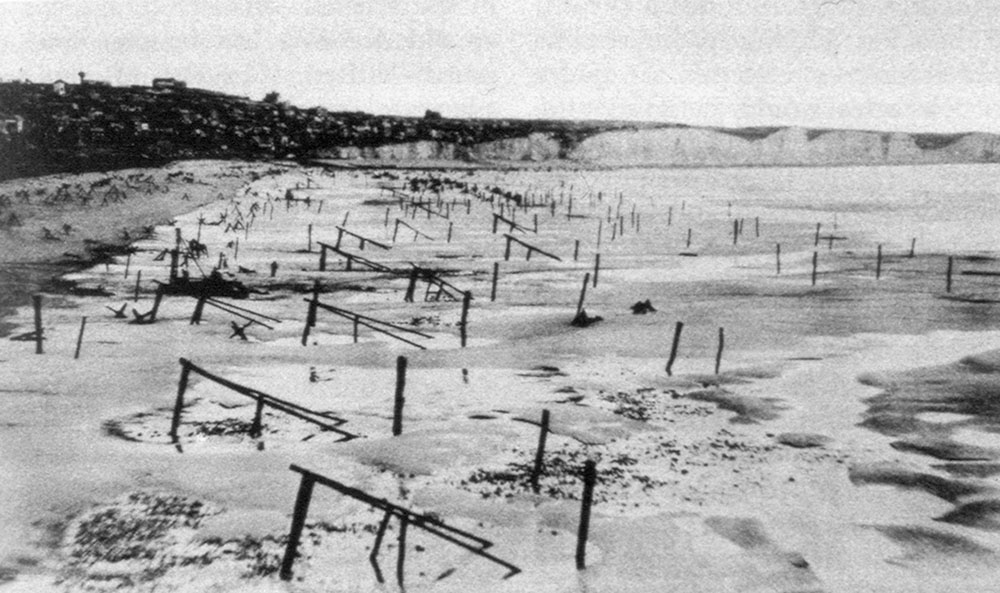
German Beach Obstacles at Low Tide
Understanding that the Allies would have to make a beach assault, and believing the Normandy coast to be a possible landing site, Rommel had his troops erect obstacles along the beaches in the months leading up to D-Day.
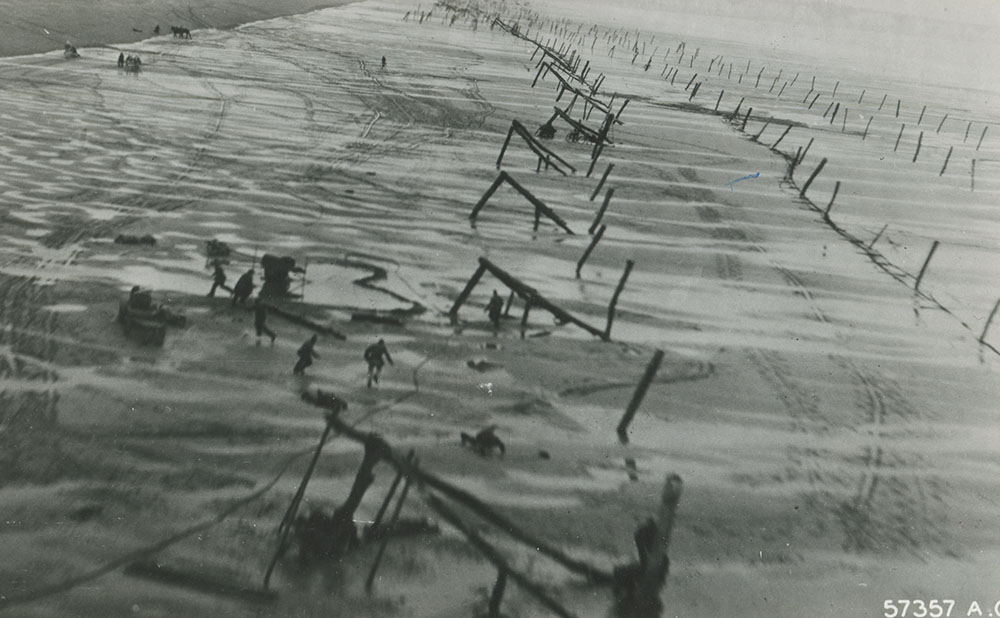
Allied Reconnaissance of German Soldiers Setting up Beach Obstacles
Understanding that the Allies would have to make a beach assault, and believing the Normandy coast to be a possible landing site, Rommel had his troops erect obstacles along the beaches in the months leading up to D-Day.
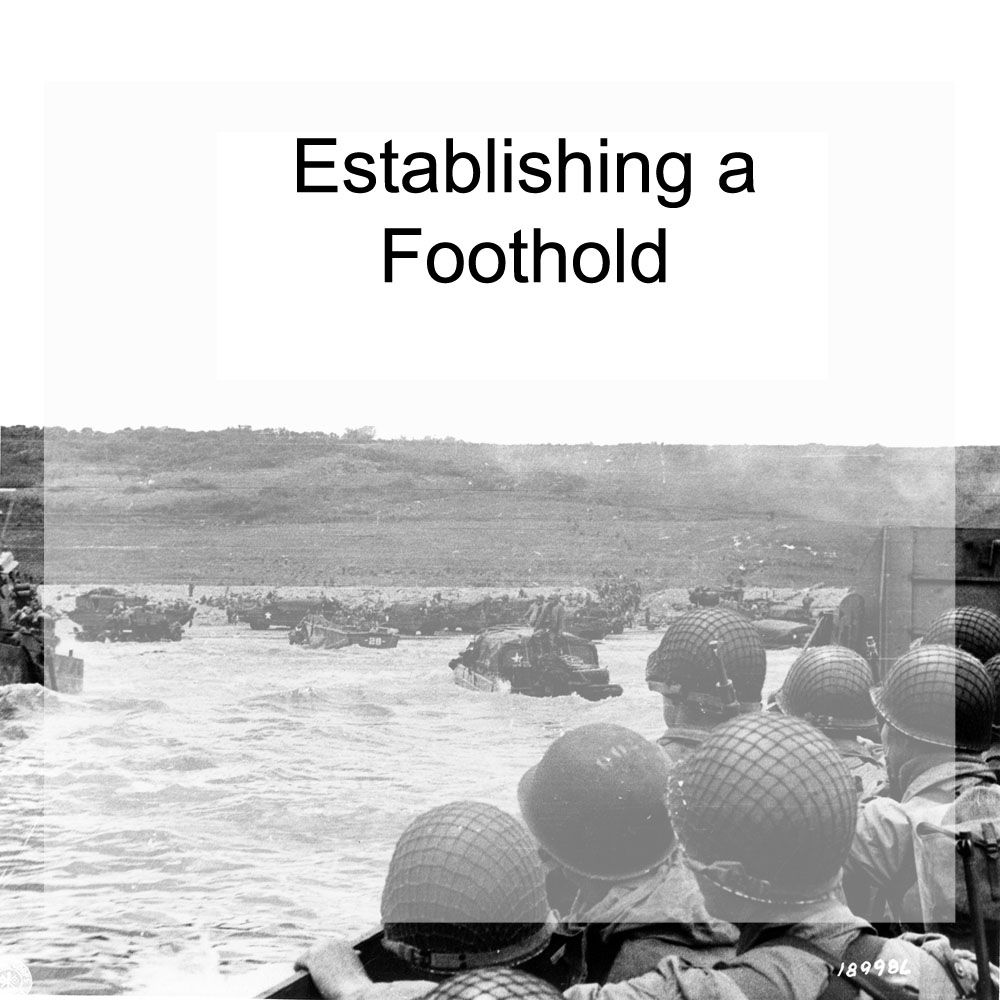
Establishing a Foothold
The first American troops came ashore simultaneously at Omaha and Utah beaches at approximately 6:30 in the morning: H-Hour. Allied troops fought through the sea only to encounter heavy fire, obstacles, and heavily mined beaches.
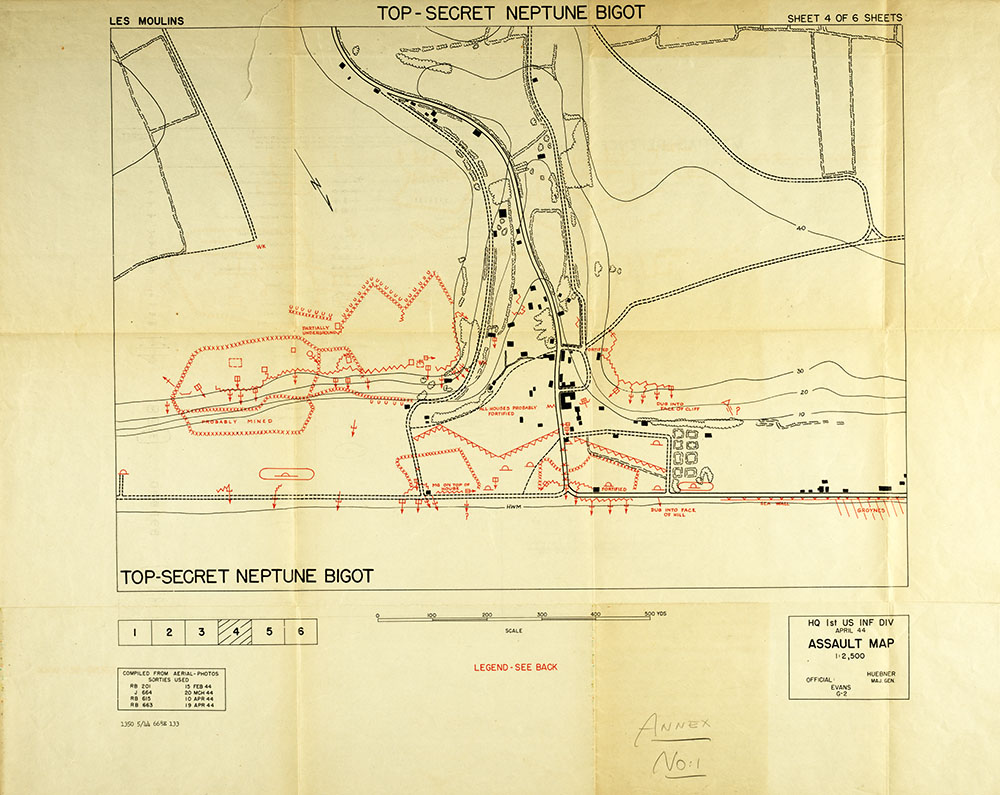
Top-Secret Assault Map of Les Moulins, France
This reconnaissance map was created by the 1st Infantry Division’s intelligence section for use by the landing force. It illustrates possible mined areas, machine-gun positions, and obstacles for this section of coastline.
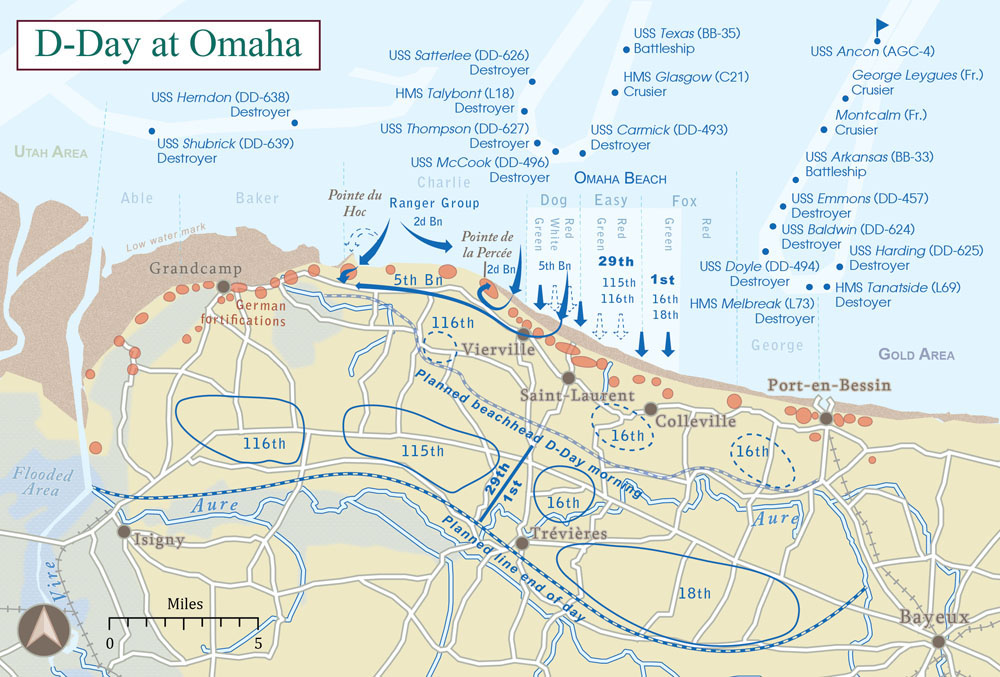
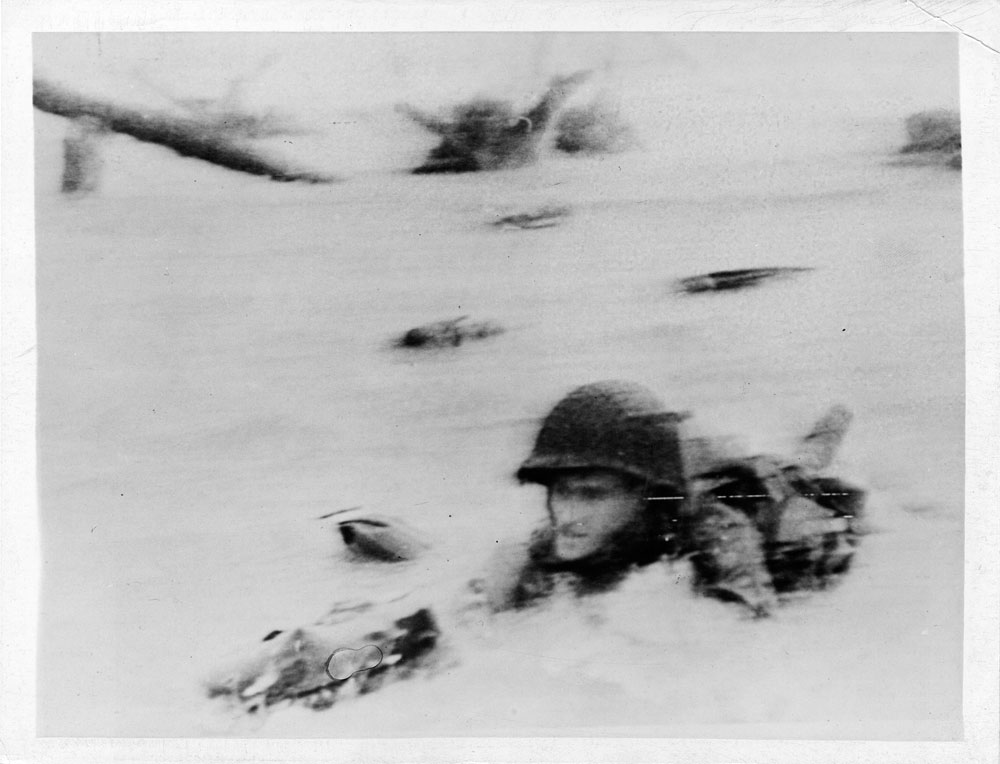
American Soldier Crawls through Heavy Surf on Omaha Beach
This doughboy shows how to go through breast high water under heavy artillery and machine gun fire on the French coast.
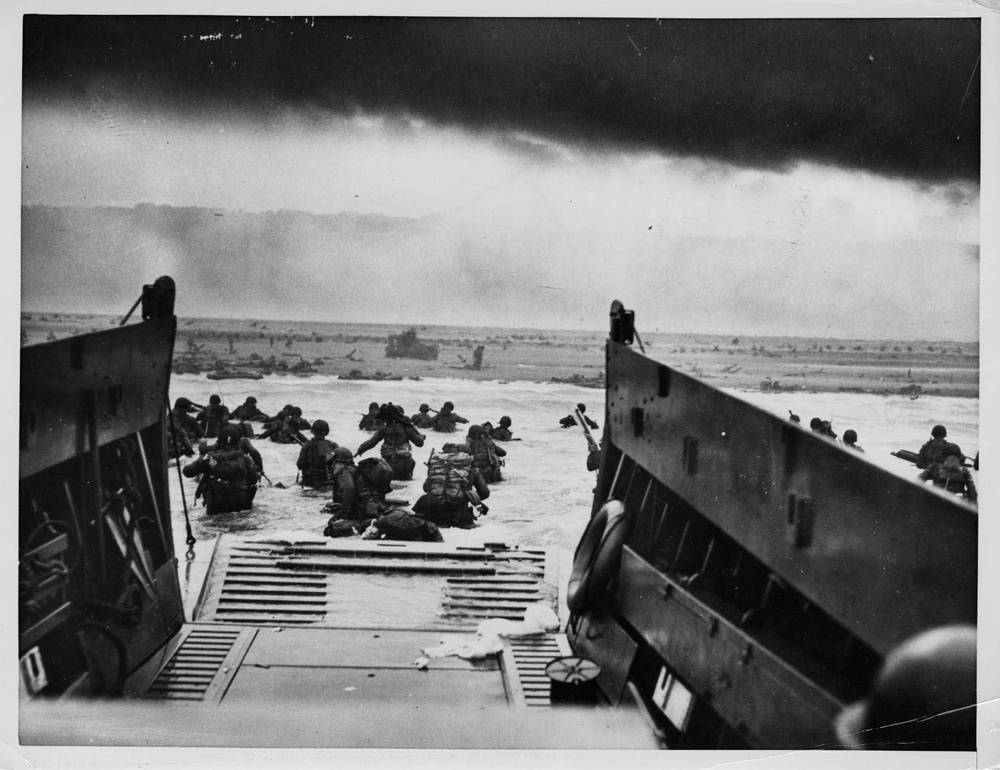
Men Exit a Higgins Boat in Waist-High Water at Omaha Beach
GI's landing in France from Coast Guard landing barge on June 6, 1944.
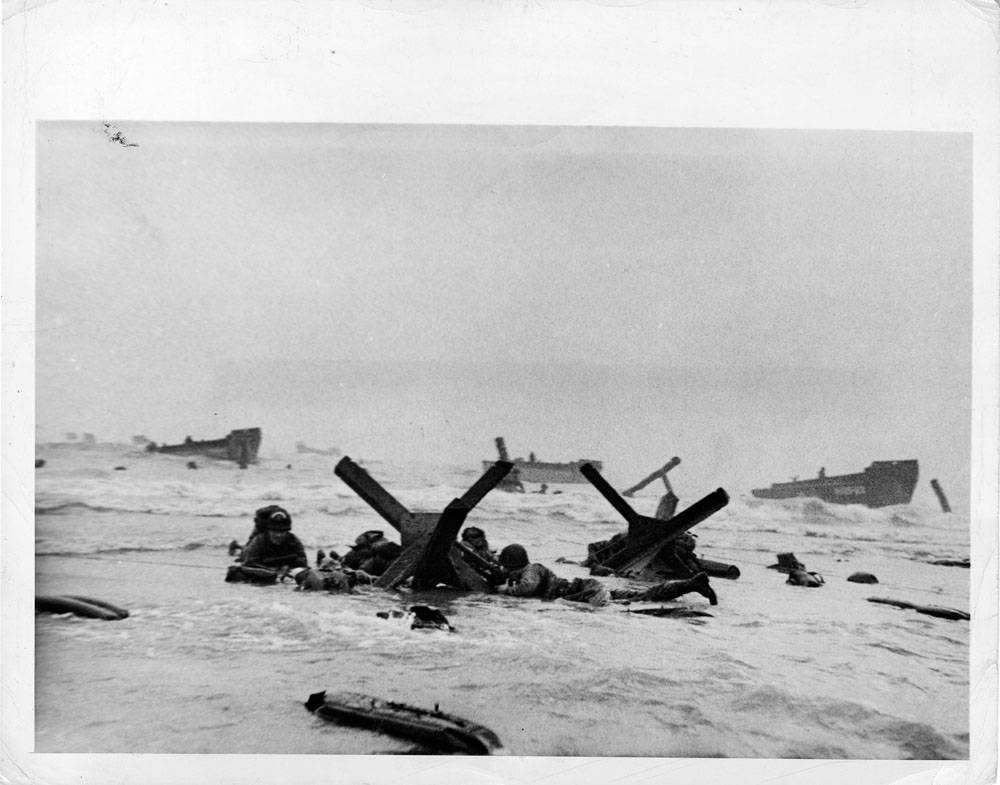
Naval Demolition Troops Prepare to Destroy an Obstacle on Omaha Beach
U.S. and British troops huddle against one of the "traps" as protection against enemy machine gun fire.
![Moving 'on the double' these members of a U.S. Navy beach battaluon [sic] dive for the protection offered by a ditch as a Nazi plane swoops down to strafe the shore somewhere in Normandy.](/sites/default/files/images/exhibit/p16630coll3815-1000.jpeg)
Naval Demolition Troops Run for Cover on Omaha Beach
Moving 'on the double' these members of a U.S. Navy beach battaluon [sic] dive for the protection offered by a ditch as a Nazi plane swoops down to strafe the shore somewhere in Normandy.
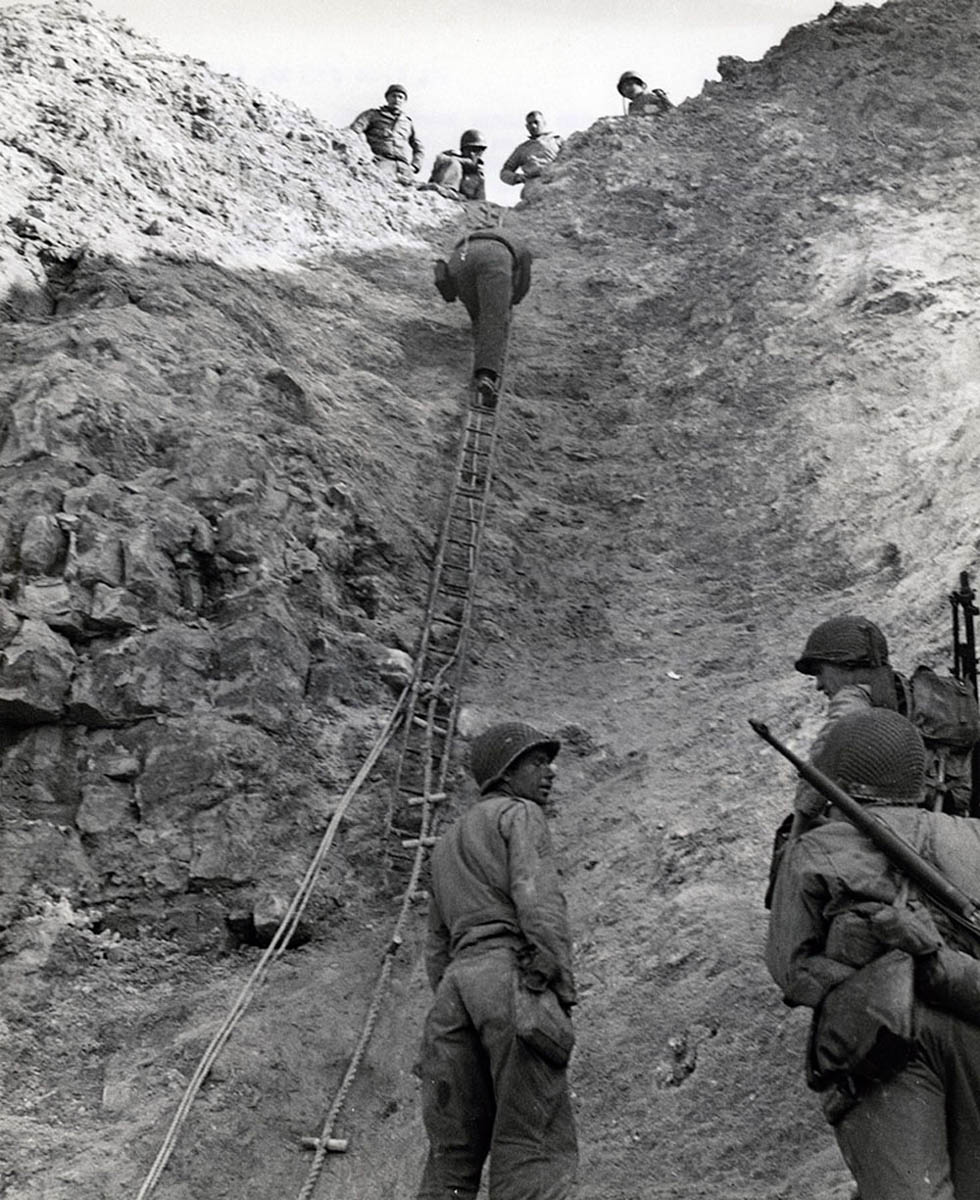
Army Rangers Climb a Rope Ladder at Pointe du Hoc
U. S. Army Rangers show how they accomplished their feat by climbing a makeshift ladder to take German gun crews by surprise.
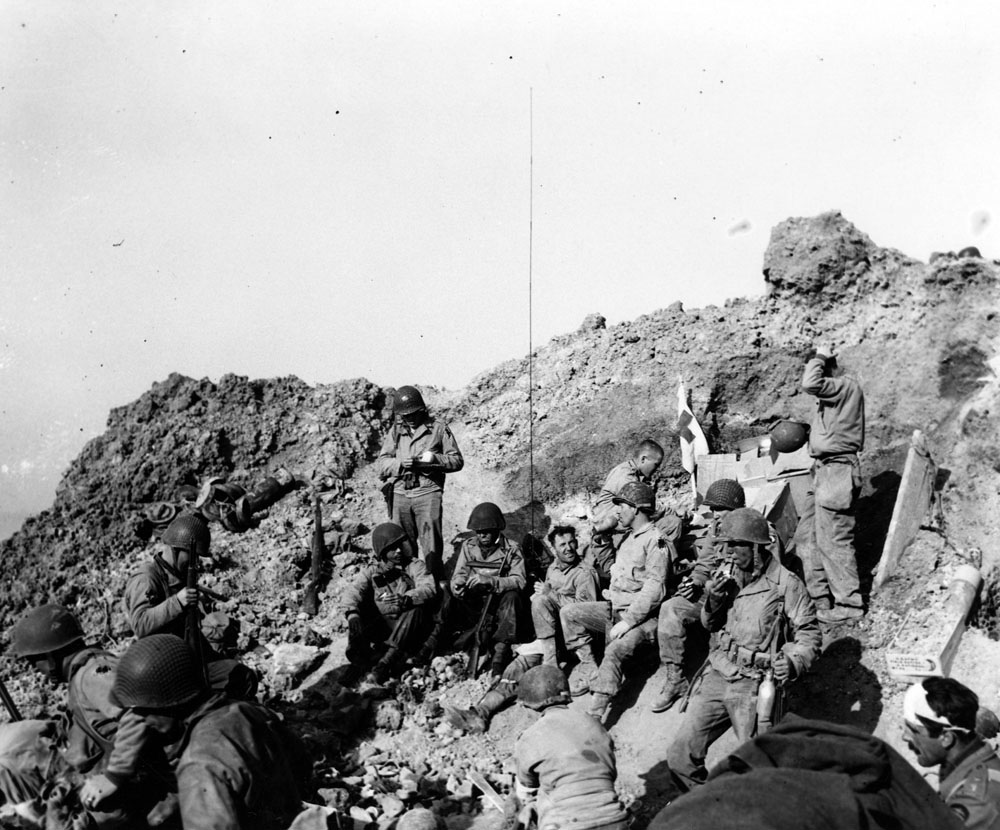
Army Rangers Rest atop Pointe du Hoc after Securing the Cliff
U.S. Army Rangers rest atop the cliffs at Pointe du Hoc, which they stormed in support of Omaha Beach landings on D-Day, 6 June 1944.
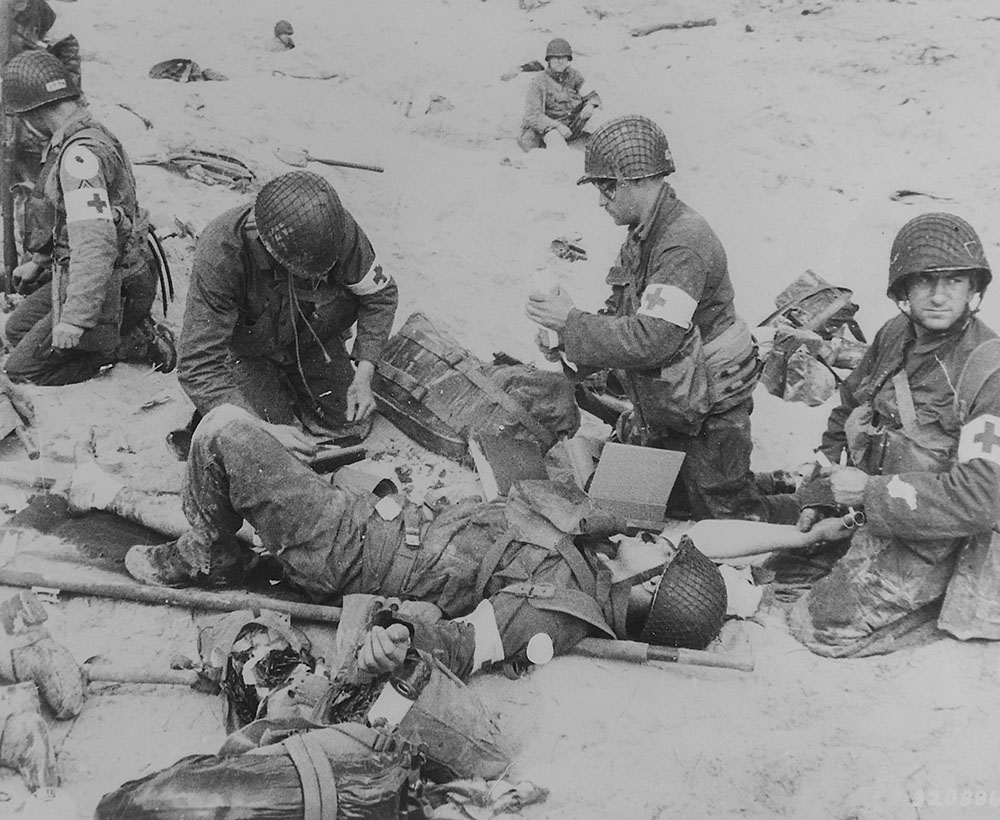
Medics Treat a Fellow Wounded Medic on Utah Beach
American Medics render first aid to troops in the initial landing on Utah Beach.
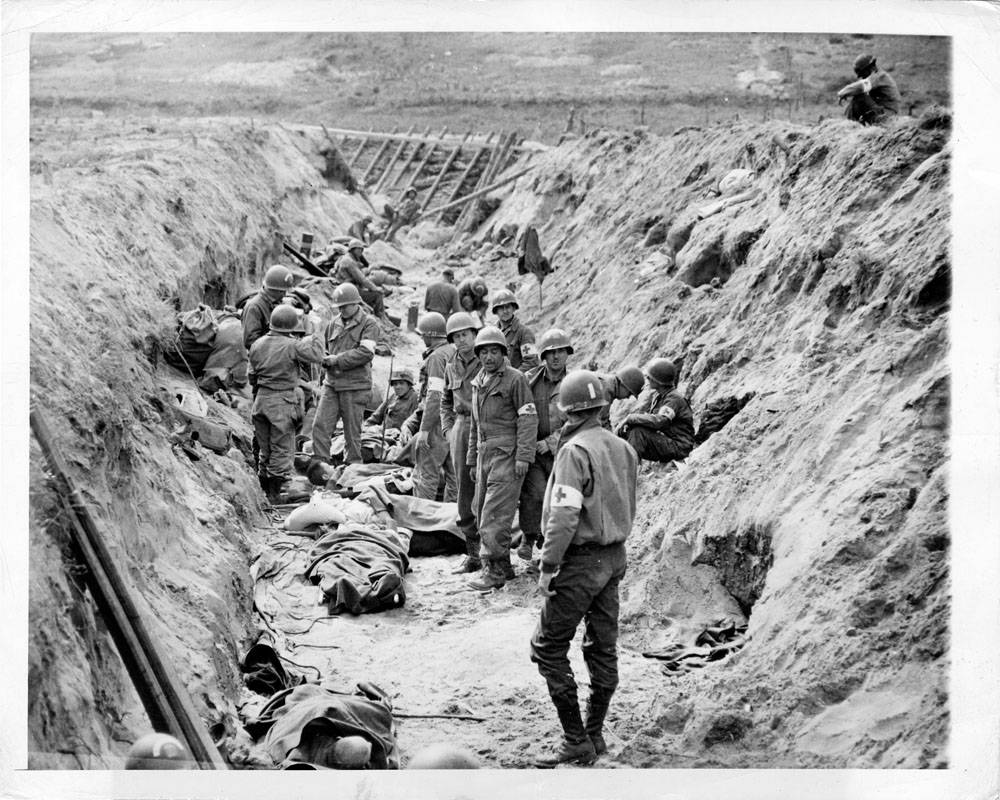
Wounded Soldiers Are Administered First Aid by Medical Personnel in a German Trench
American medical corpsmen convert a German anti-tank ditch into a temporary first aid station.
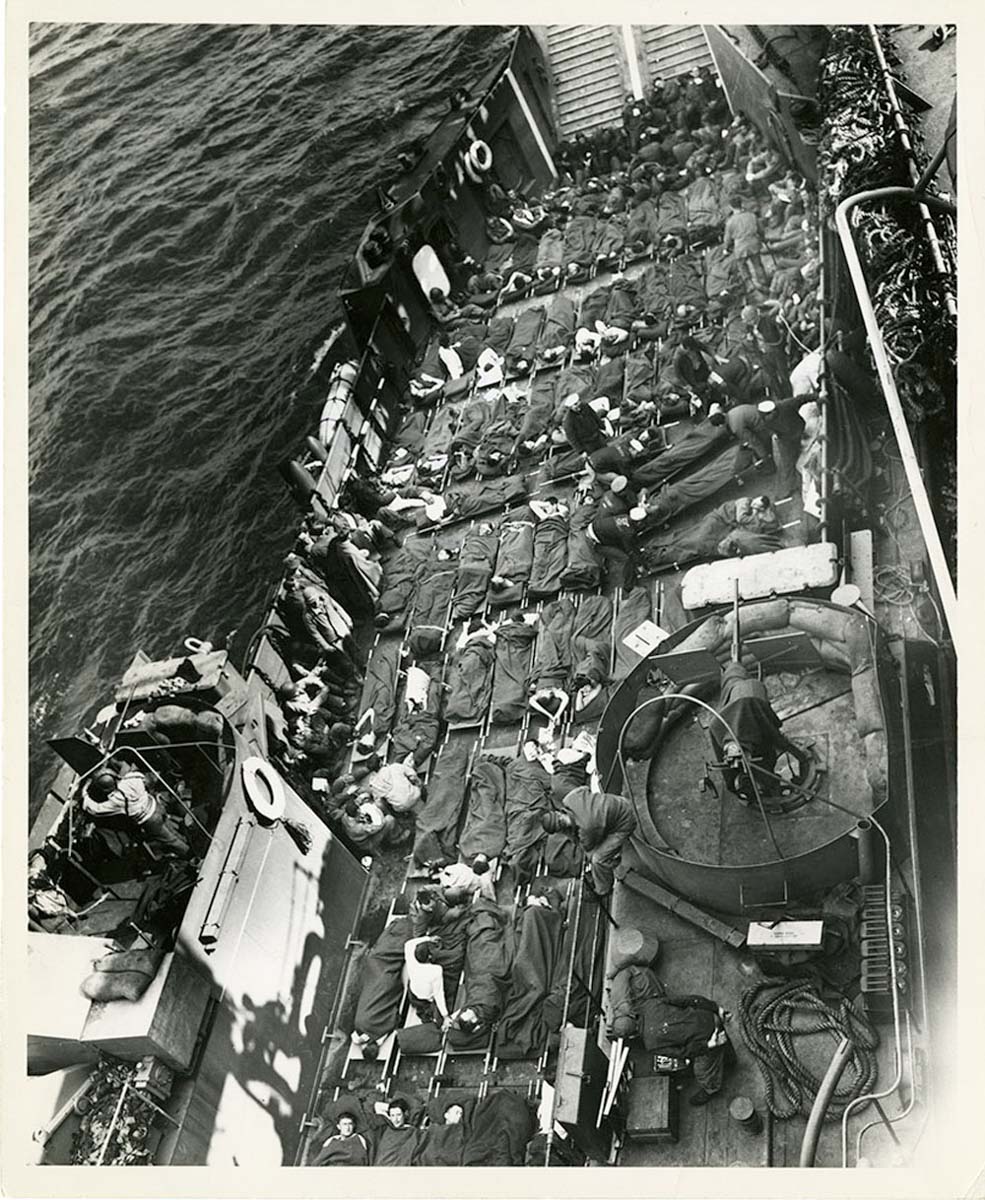
A Coast Guard LCT Evacuates Wounded Soldiers
Row and row of stretchers cover the decks of a Coast Guard LCT (Landing Craft Tank) bringing out wounded invaders from the flaming soil of France.
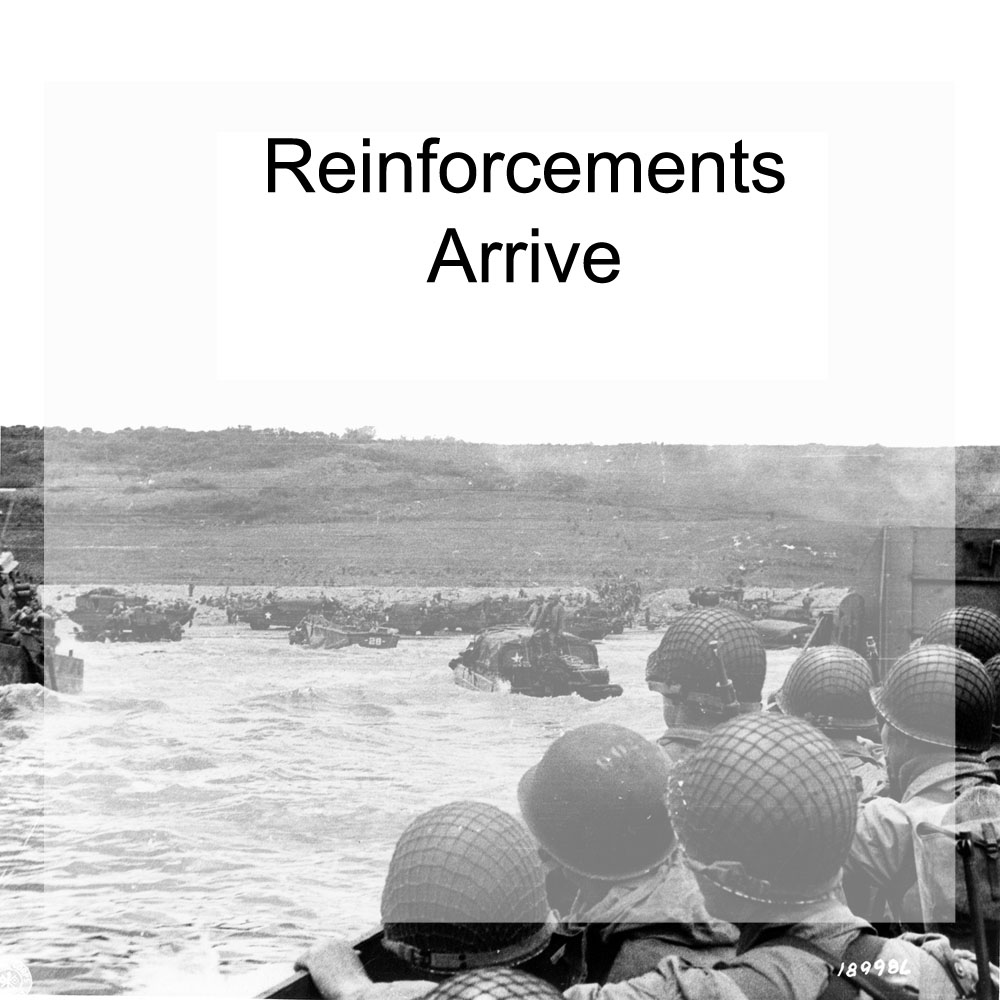
Reinforcements Arrive
As the initial waves of Allied forces broke through the German defenses and pushed inland, thousands more waited to come ashore.
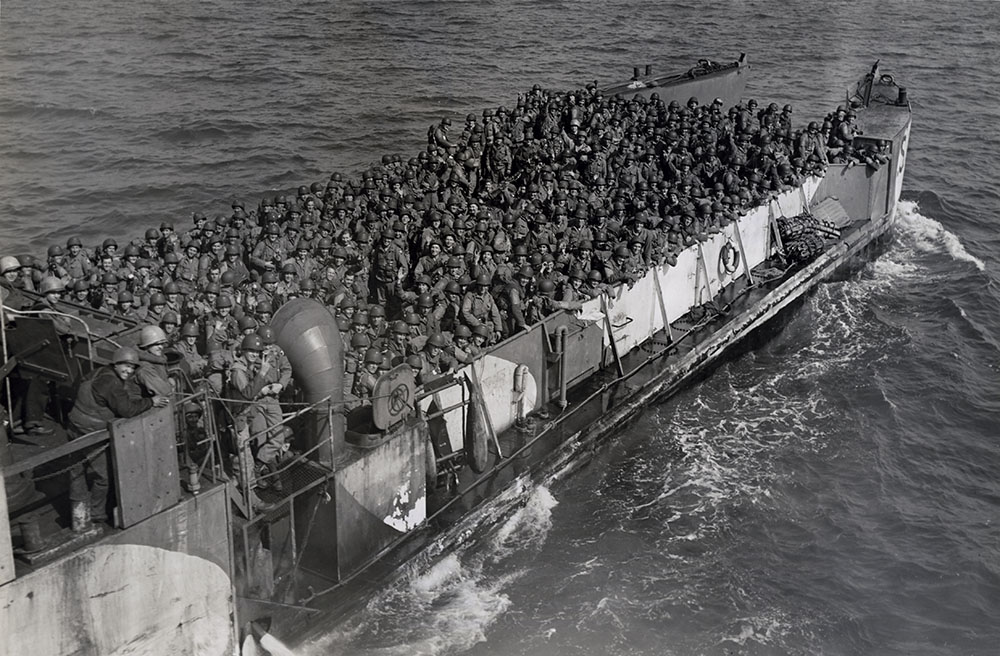
Soldiers Crowd into Every Inch of a Reinforcement Transport
Reinforcements for Normandy Beachhead U. S. soldiers crowd into every inch of space aboard this LCT (Landing Craft, Tank), which is making continuous runs from transports to the Allied beachhead on the Normandy coast.
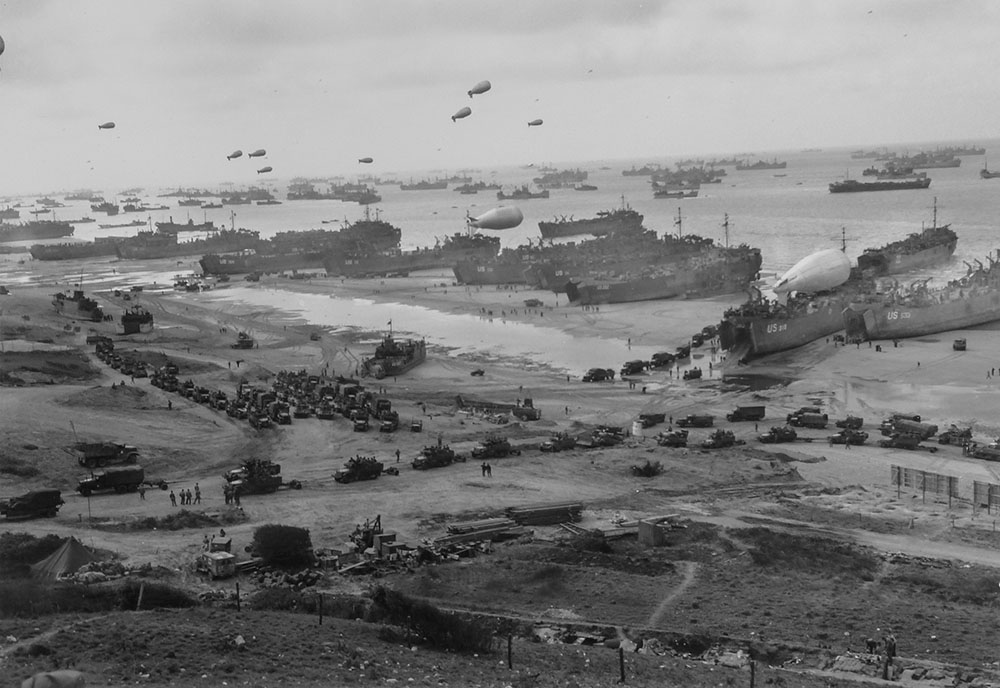
Supplies Brought Ashore — Landing Craft Crowd the Beach
Headed inland are long parades of trucks, loaded with troops and supplies.
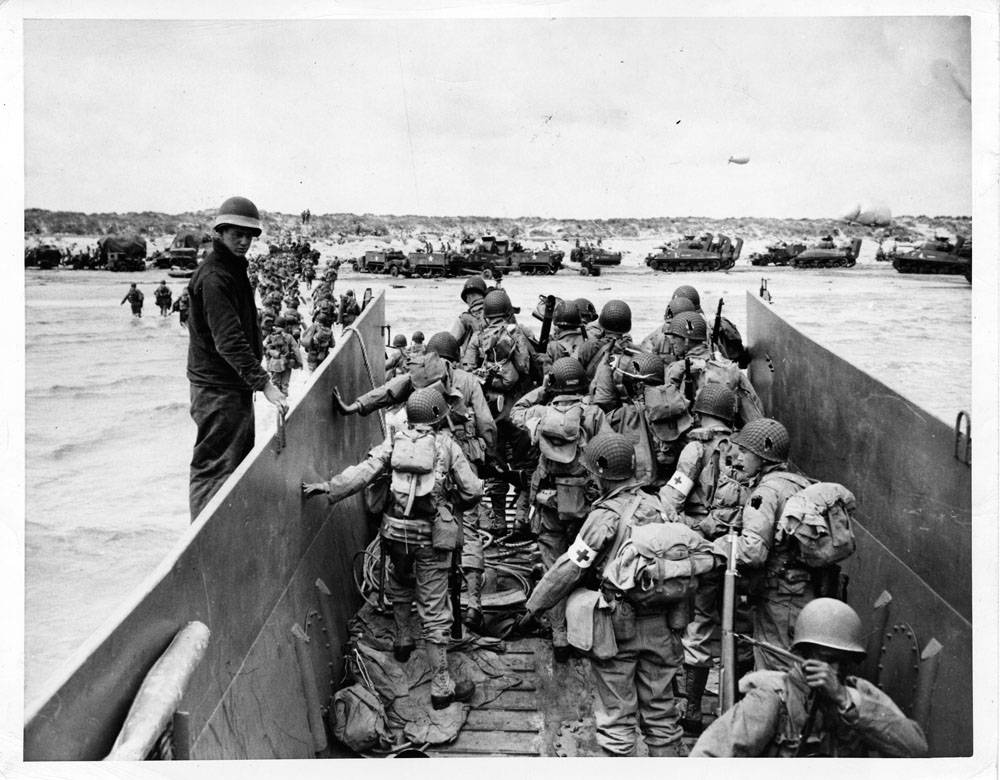
Soldiers Unloading from a Landing Craft
Soldiers exiting an amphibious landing craft into shallow water near a beach.
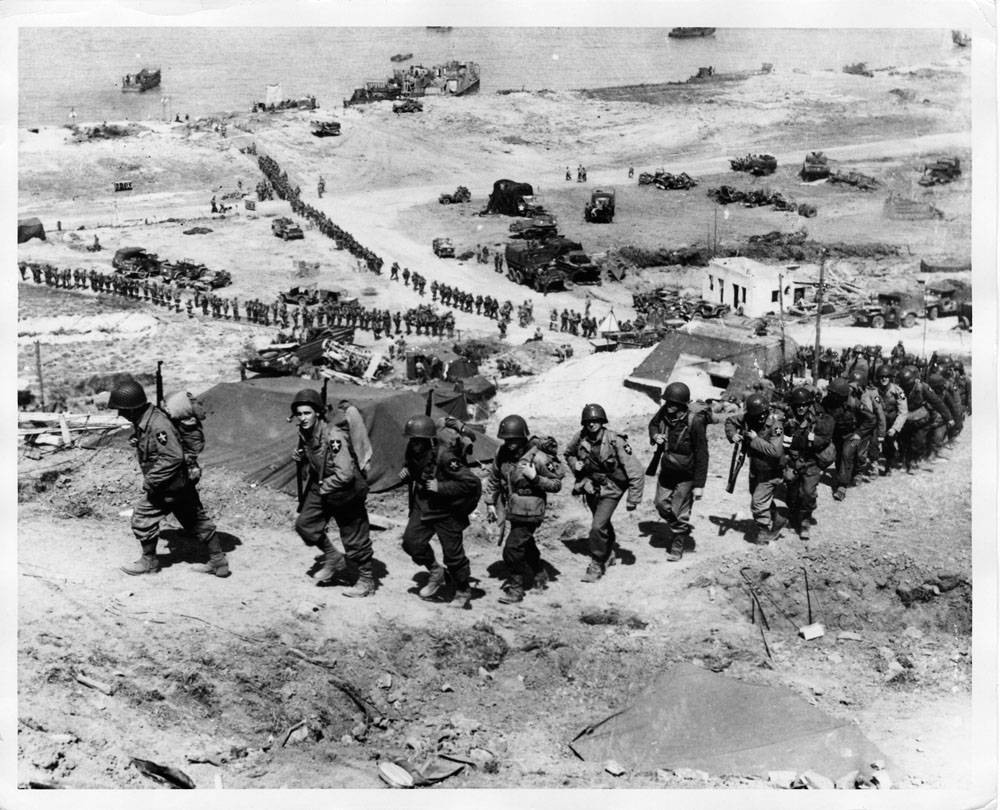
Throngs of Allied Troops Make Their Way Inland to Reinforce the Landing Force
American troops climb the bluff overlooking Omaha Beach as units move inland to form the vanguard for the massive invasion of Nazi-dominated Europe.
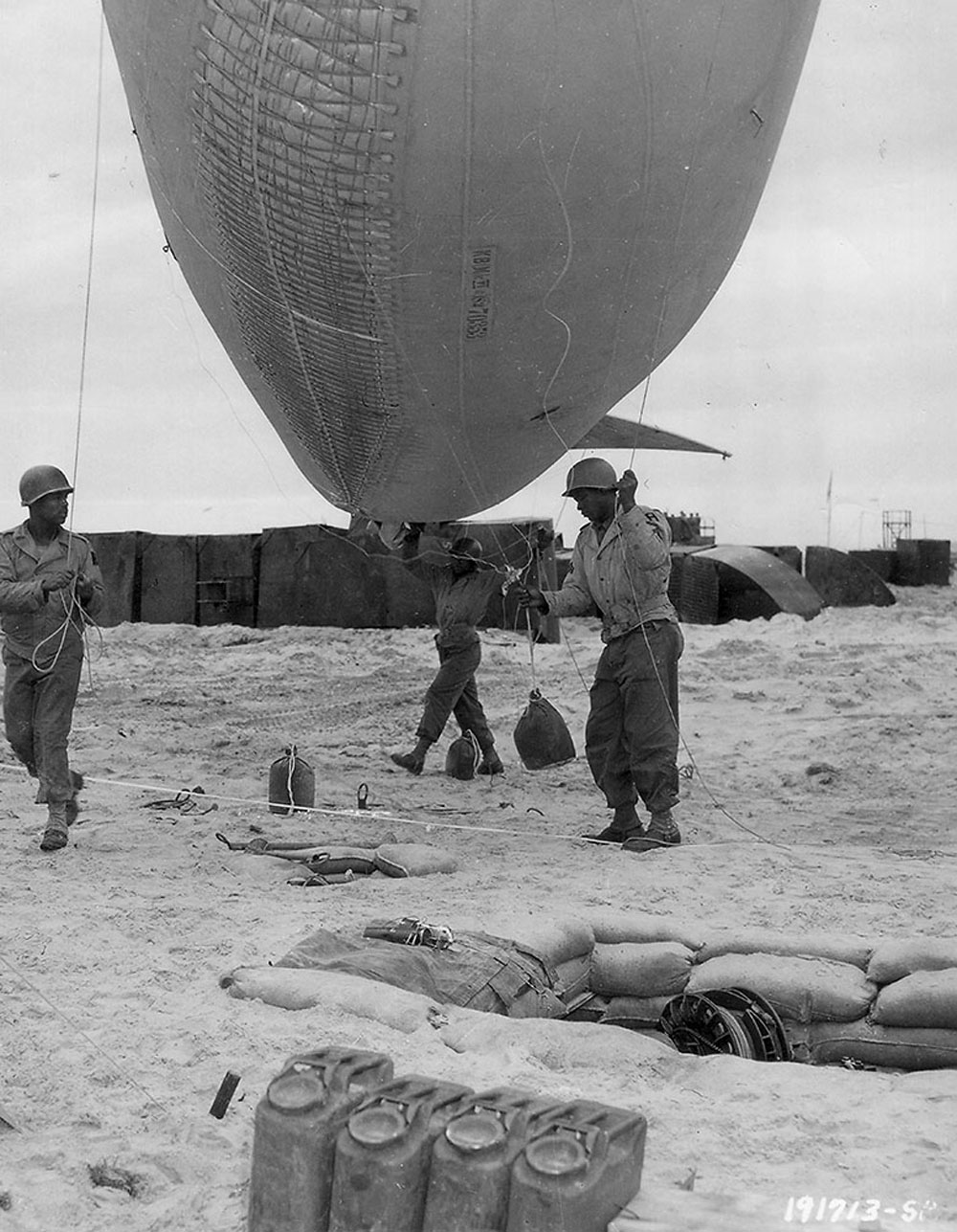
Soldiers of the 320th Very Low Altitude Barrage Balloon Battalion Prepare to Deploy a Balloon on Omaha Beach
Soldiers of the 320th Barrage Balloon Battalion prepare to deploy a balloon on Omaha Beach.
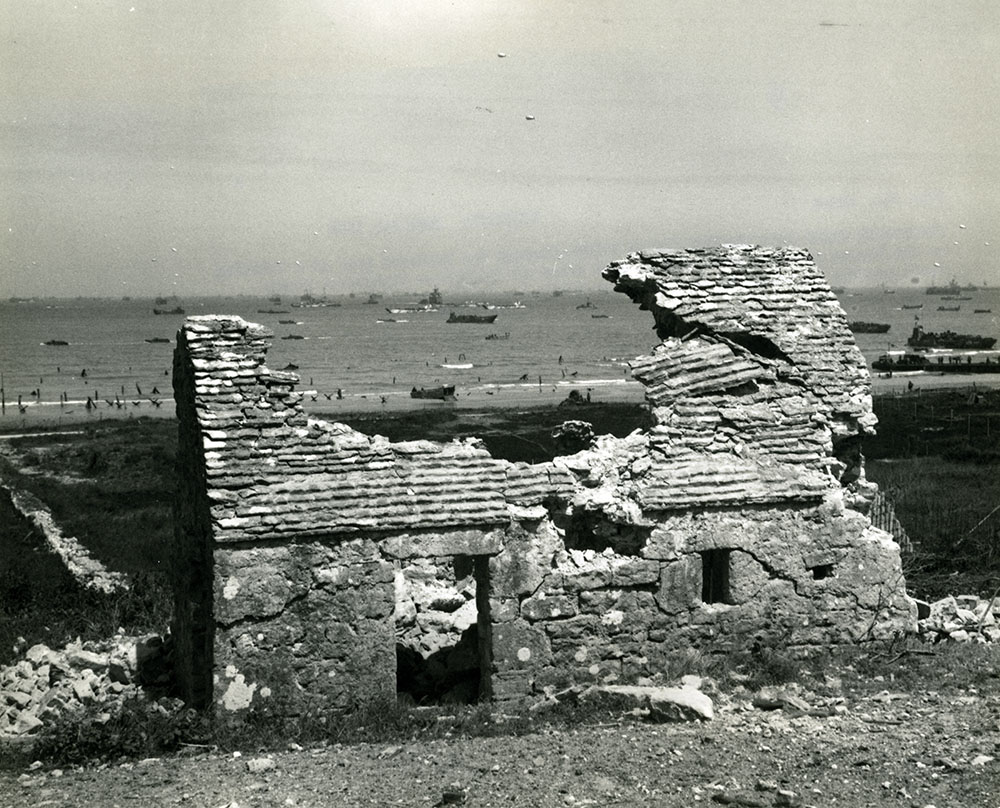
The Allied Amphibious Fleet
Through the battered roof of a building on the French invasion coast can be seen ships of the Allies amphibious fleet.
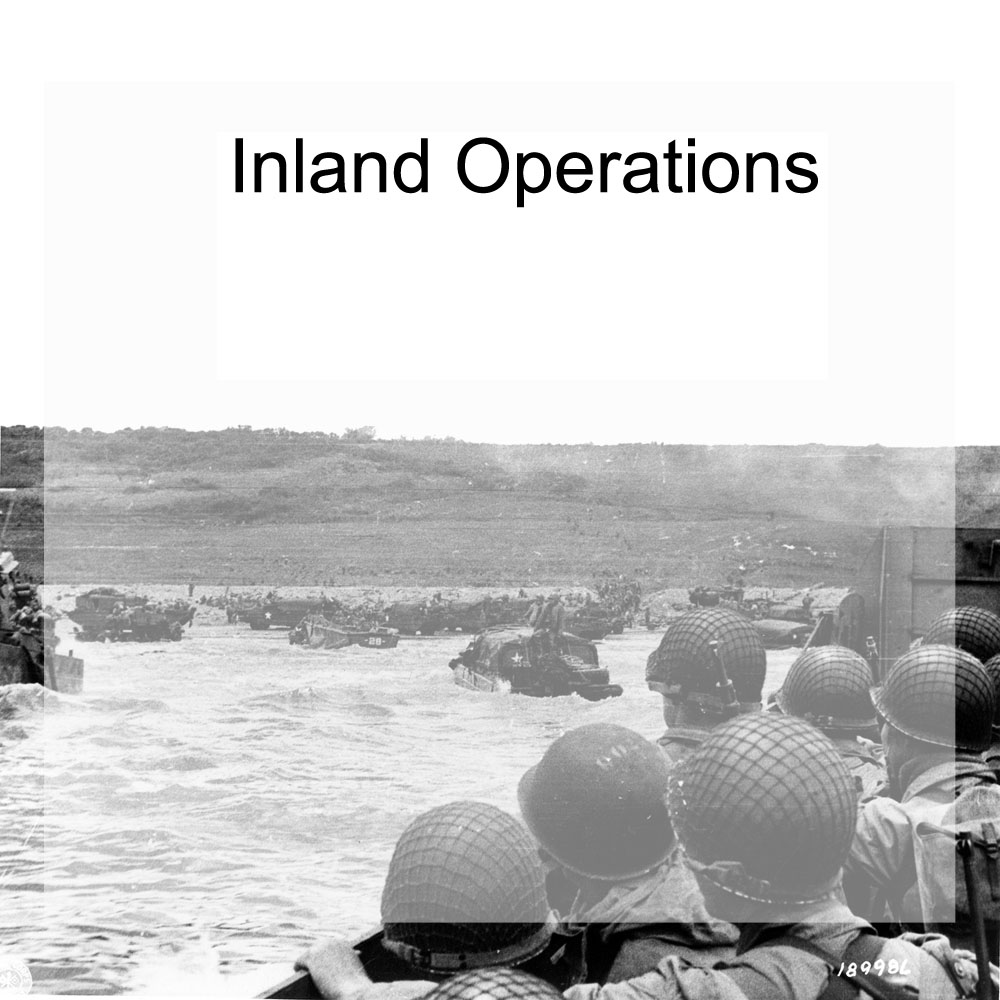
Inland Operations
By the end of June 1944, Allied forces had secured the Cotentin Peninsula and reached the port at Cherbourg.
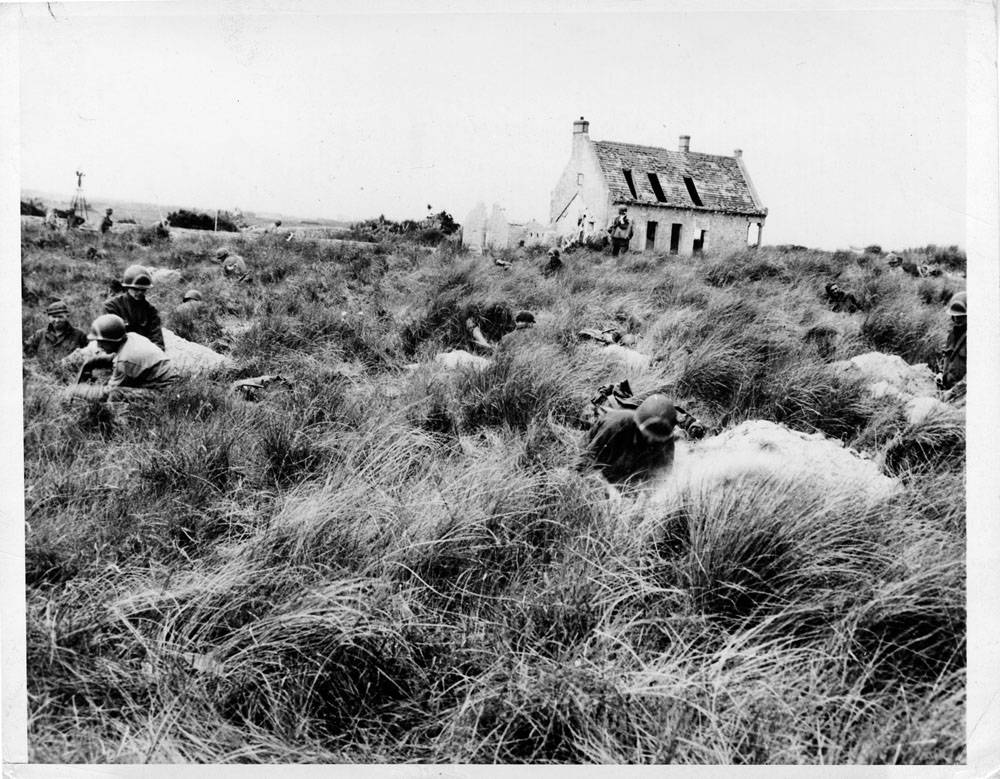
Soldiers Take up Defense Positions in the Dunes beyond the Beaches
American soldiers dig themselves in against counterattack in the fields inland.
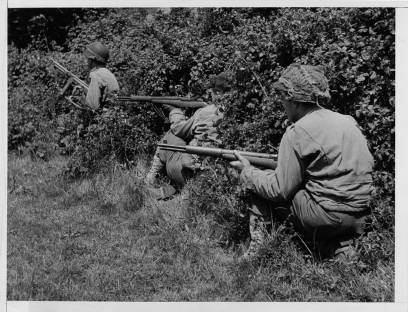
American Soldiers Seek Cover from German Snipers in the Norman Hedgerows
Taking cover in the bushes this allied sniper patrol searches nearby trees and shrubs for any enemy soldiers waiting to ambush them.
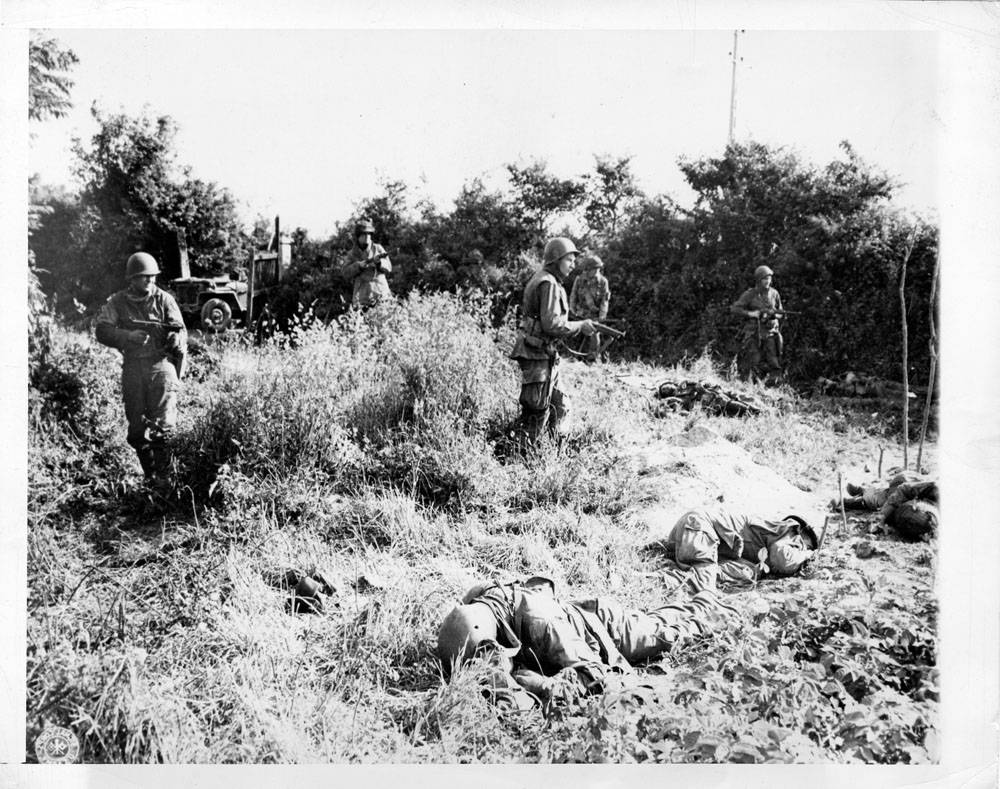
American Soldiers Proceed Cautiously through Hedgerows as American Casualties Lay in Foreground
Moving warily through a field, American paratroopers pass members of their own outfit who were victims of snipers at Carentan.
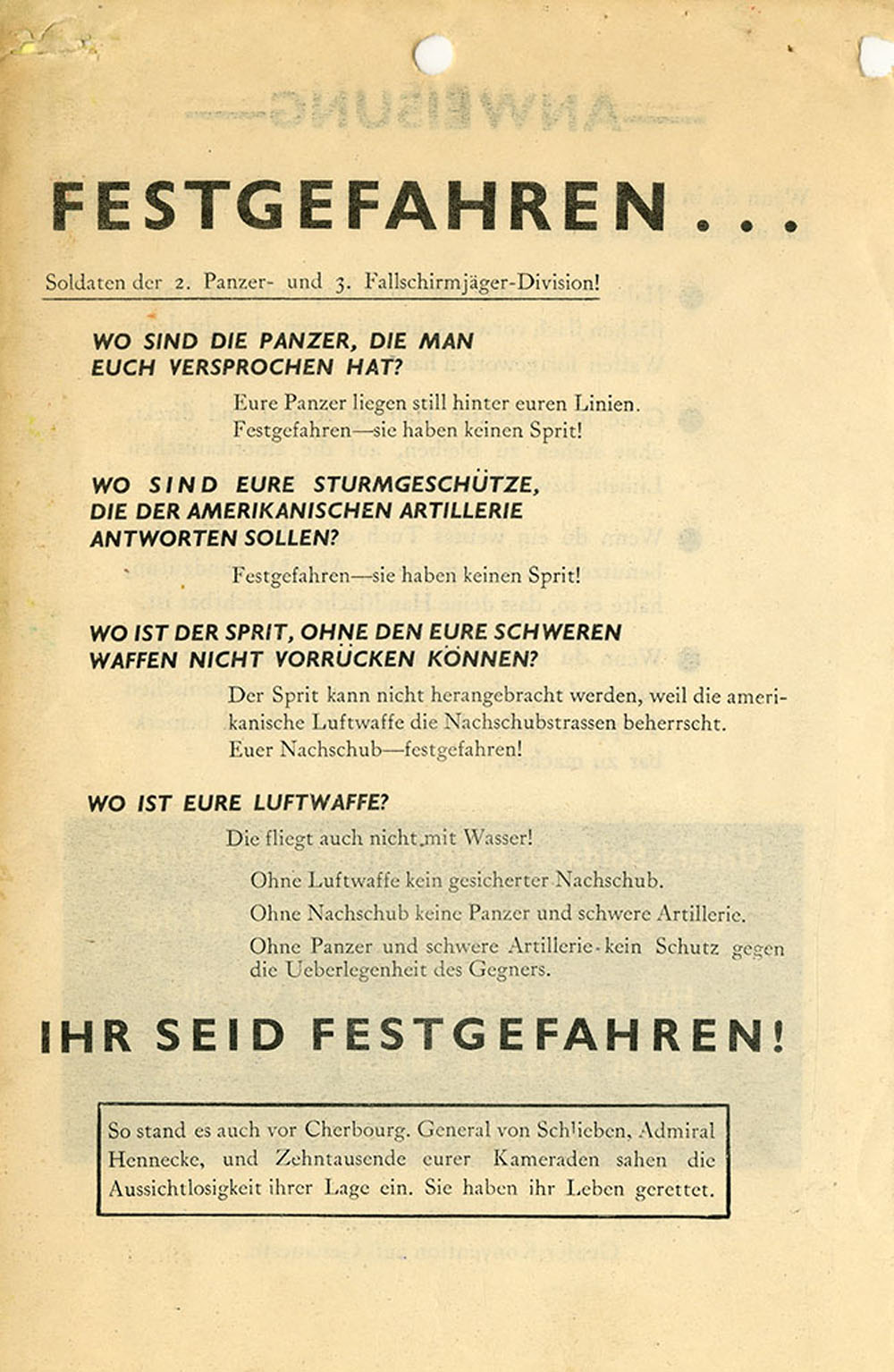
Leaflet Encouraging German Forces to Surrender to Allied Forces
This leaflet was a part of the 1st Infantry Division’s propaganda campaign to encourage the outnumbered Wehrmacht soldiers to surrender.
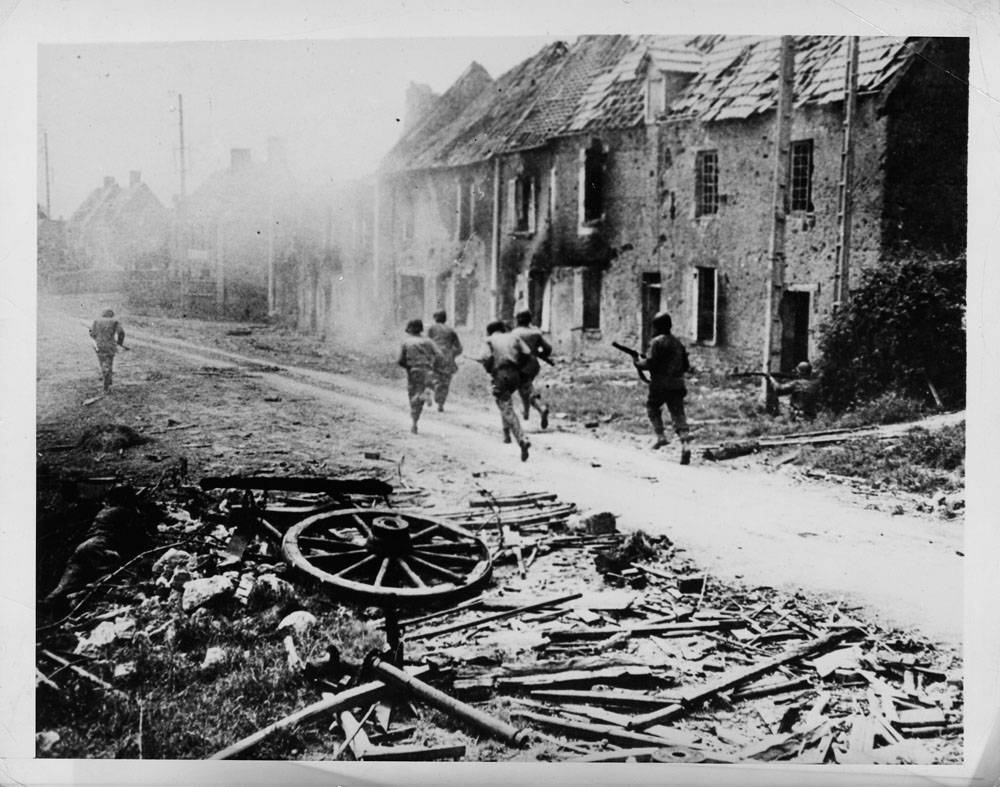
American Soldiers Run through a Severely Damaged French Village
A group of American soldiers dash through the haze of battle smoke to attack hidden Nazis in a small French village."
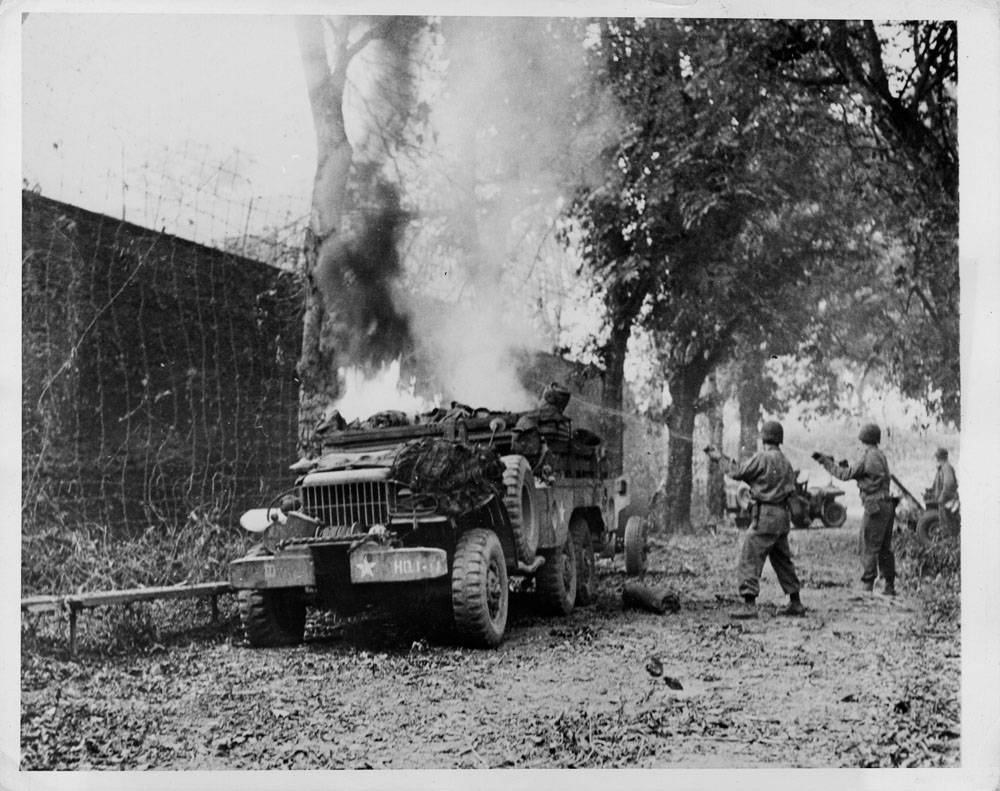
Soldiers Put Out a Burning Truck Fire
Yank soldiers at St. Lo work hard to put out the fire which destroyed this ammunition truck.
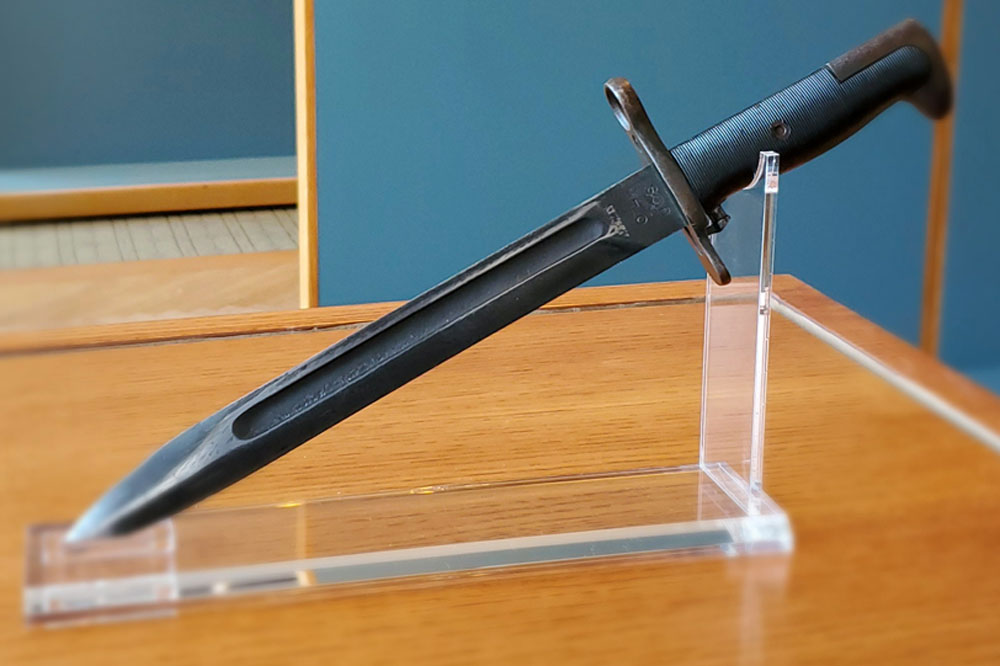
M1 Bayonet
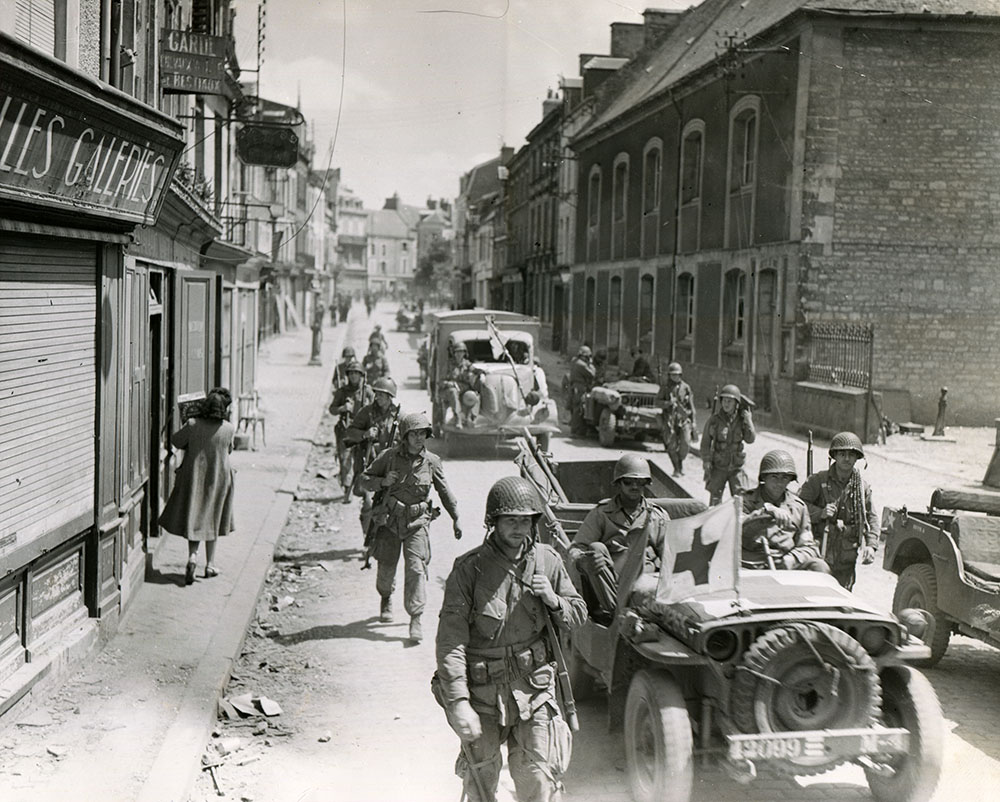
Soldiers and Vehicles Push through a French Village
Over the next several weeks, airborne units were able to take and hold Carentan through hard fighting, allowing the infantry to begin the push to expel the Germans from France after four long years.
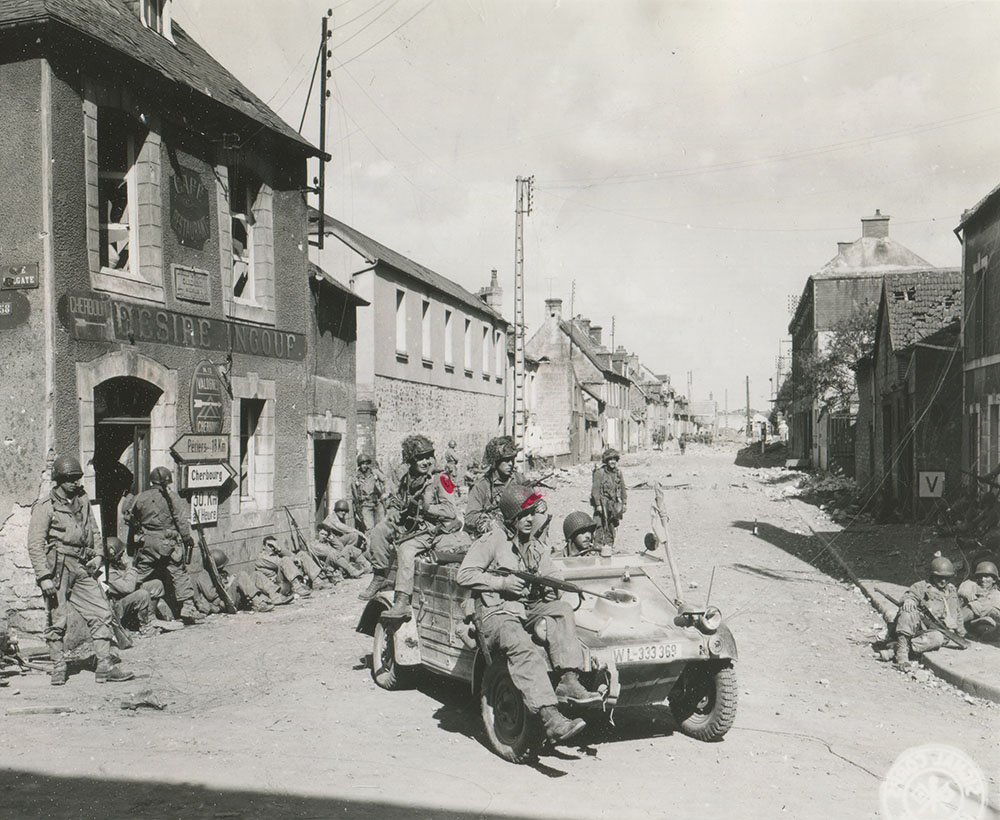
Members of the 101st Airborne Travel through a French Village in a Captured German Car
Over the next several weeks, airborne units were able to take and hold Carentan through hard fighting, allowing the infantry to begin the push to expel the Germans from France after four long years.
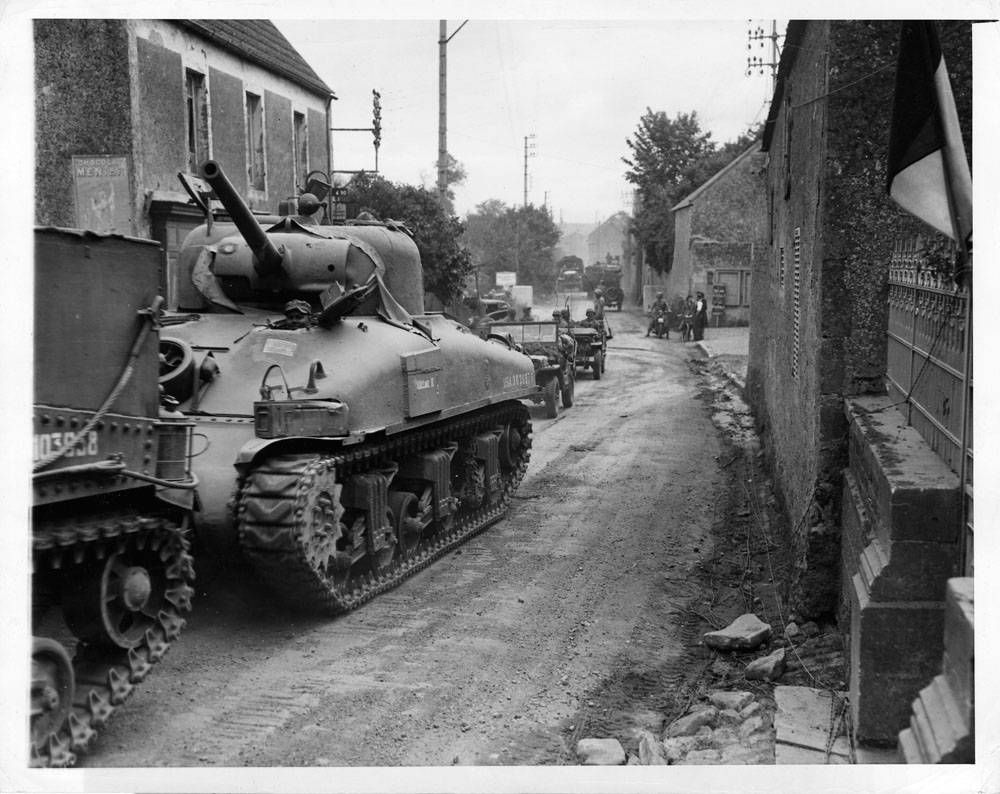
American Tanks and Jeeps Move through a French Village
American tanks and jeeps roll through a liberated French town, on their way to engage the Germans.
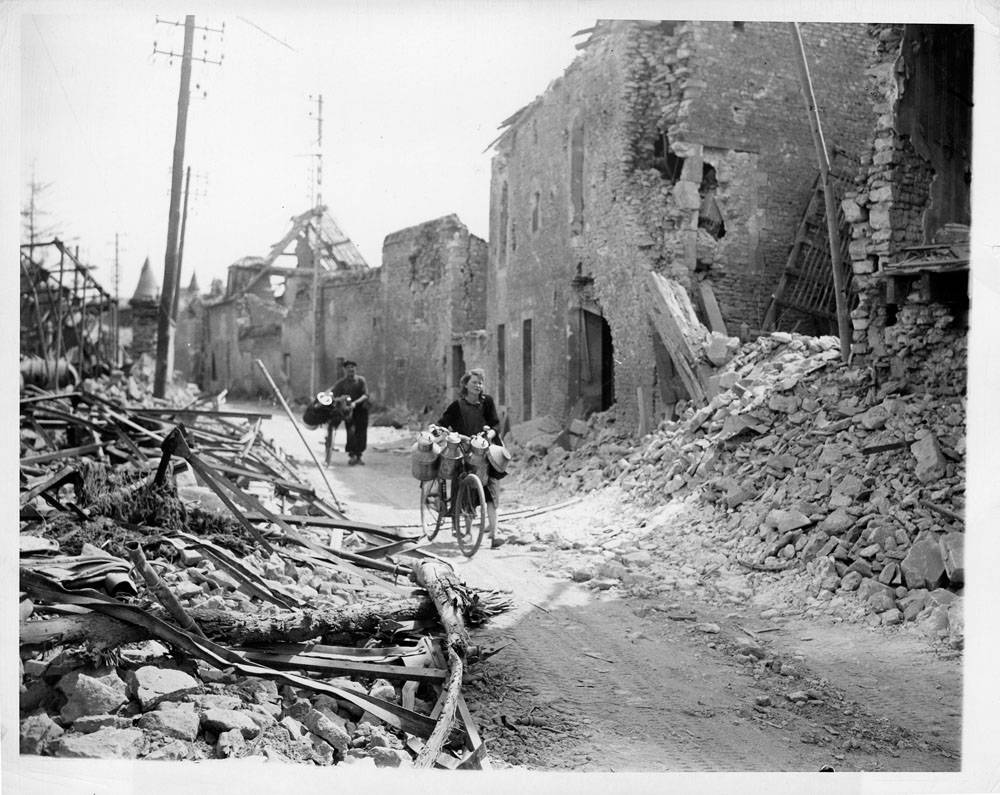
French Civilians Travel by Bike through a Destroyed French Village
A Frenchmen and his wife, loaded milk cans on the handlebars of their bicycles, make their way through the wreckage of this important city in Normandy.
